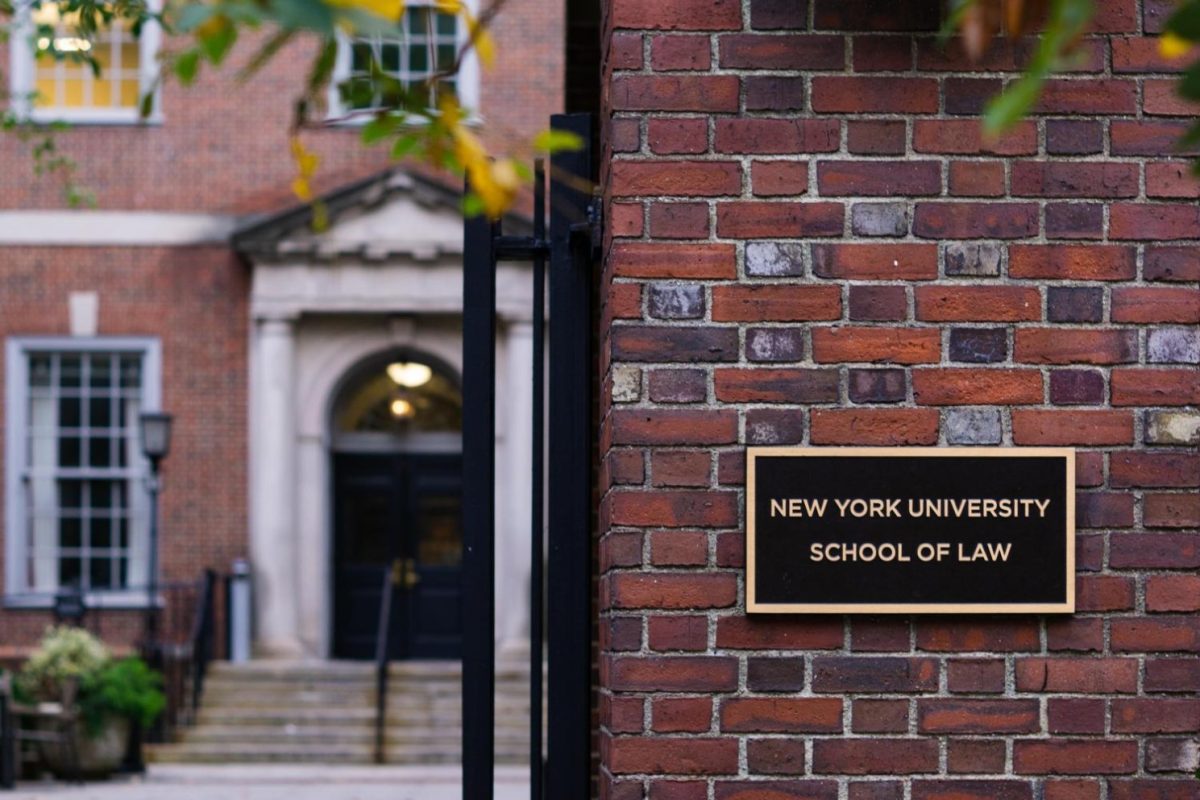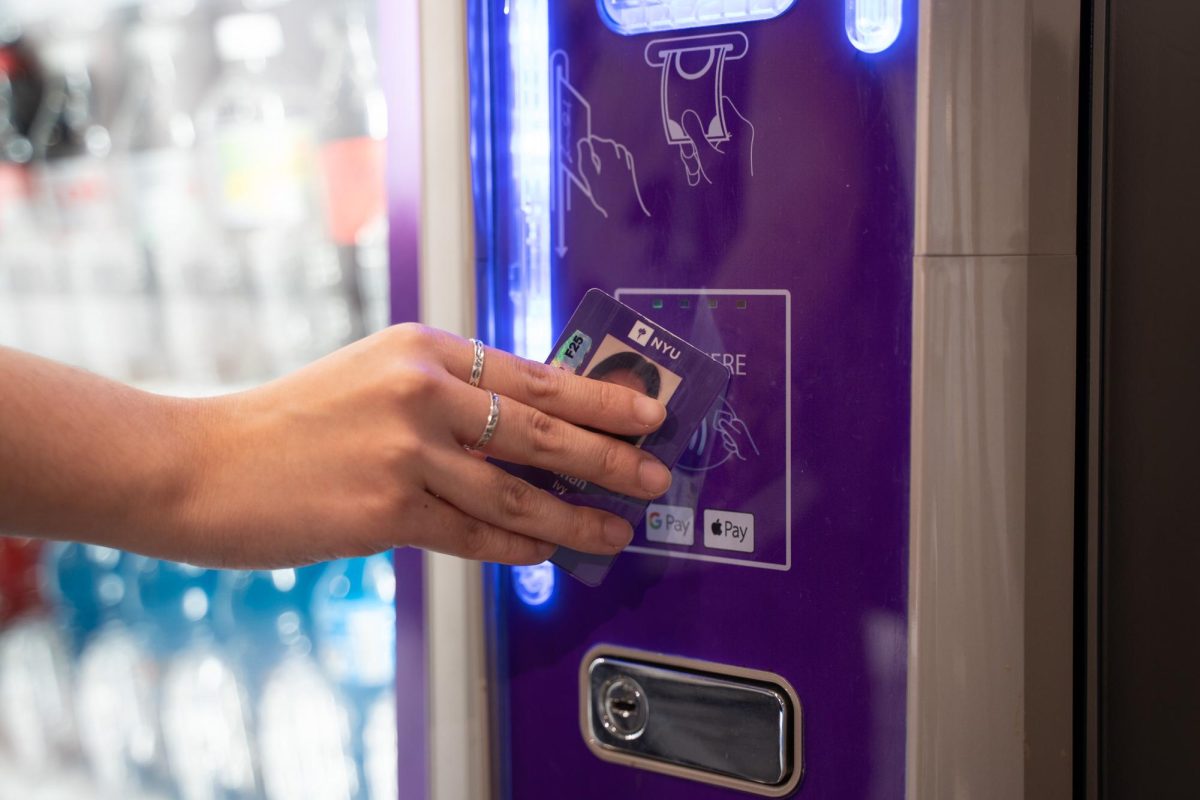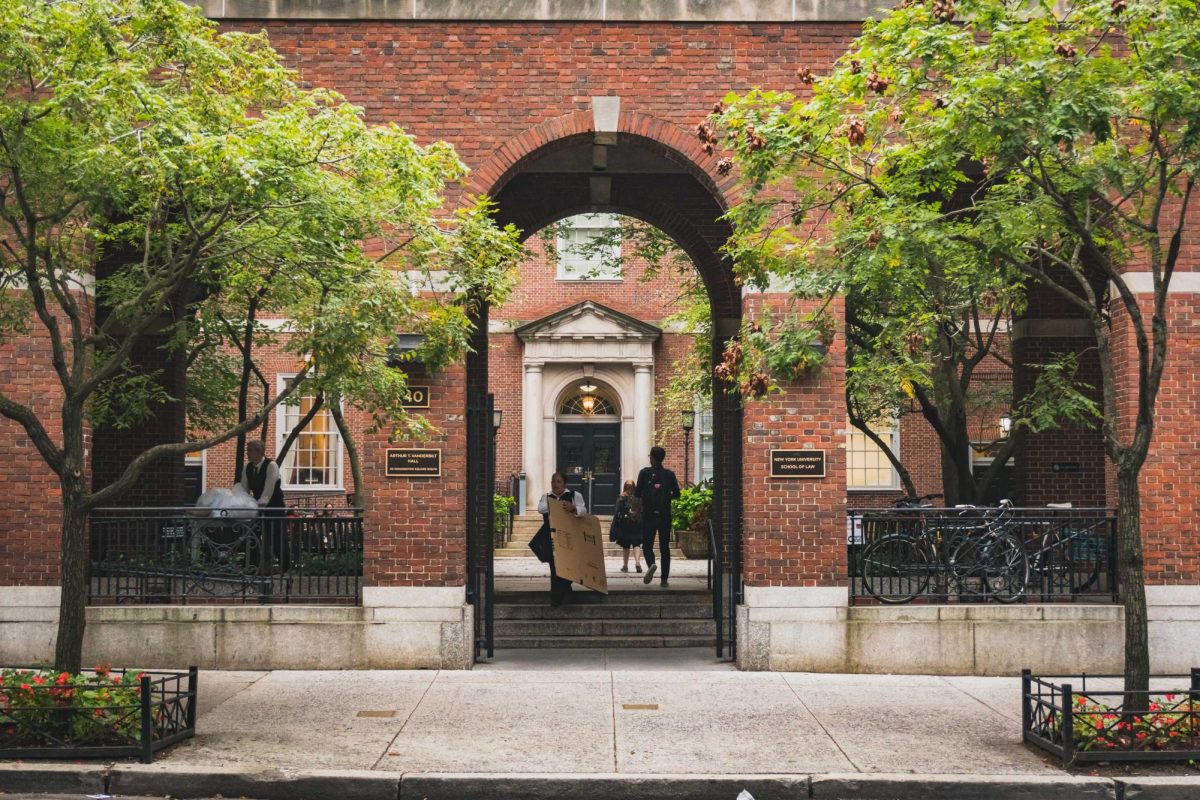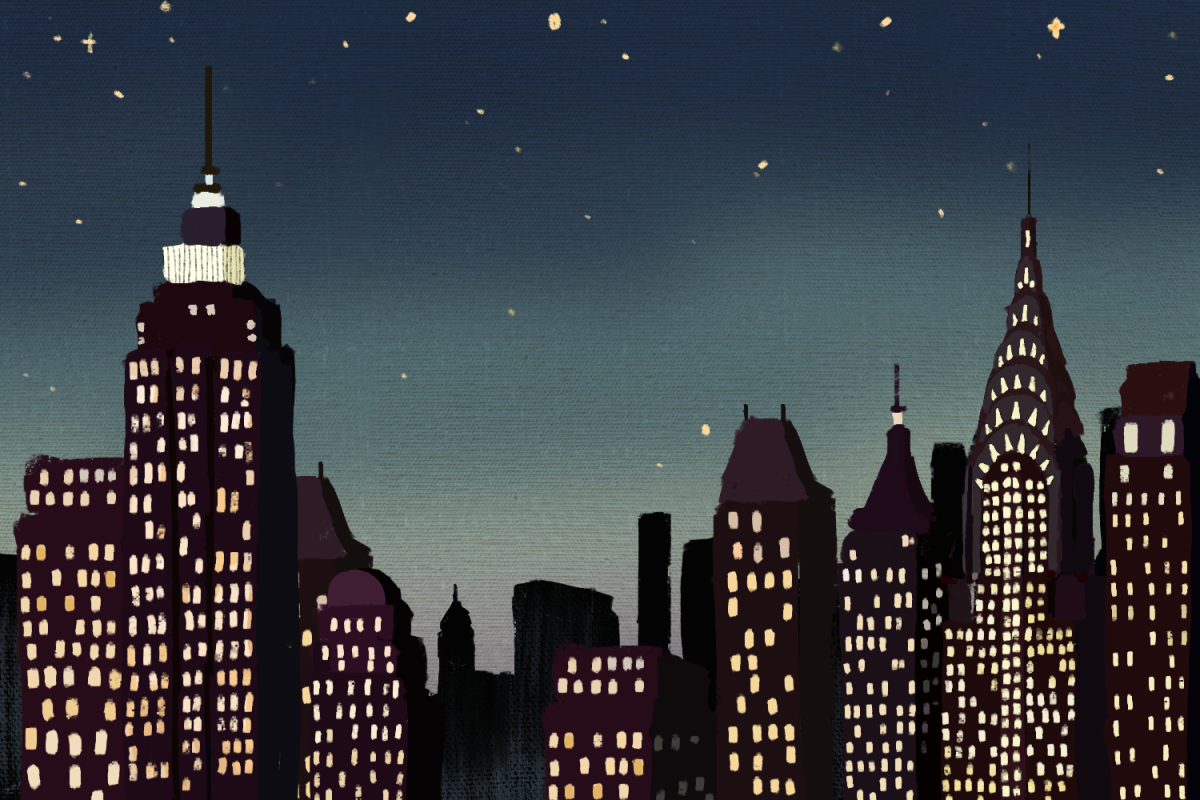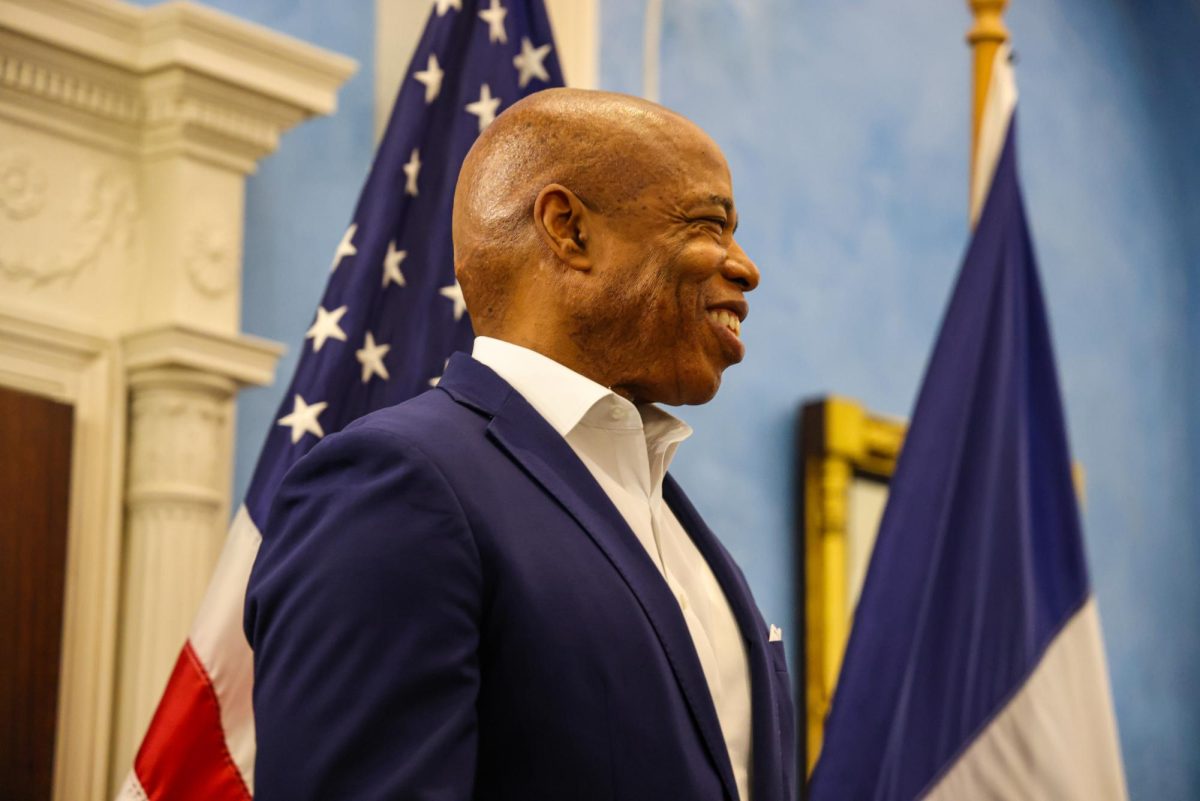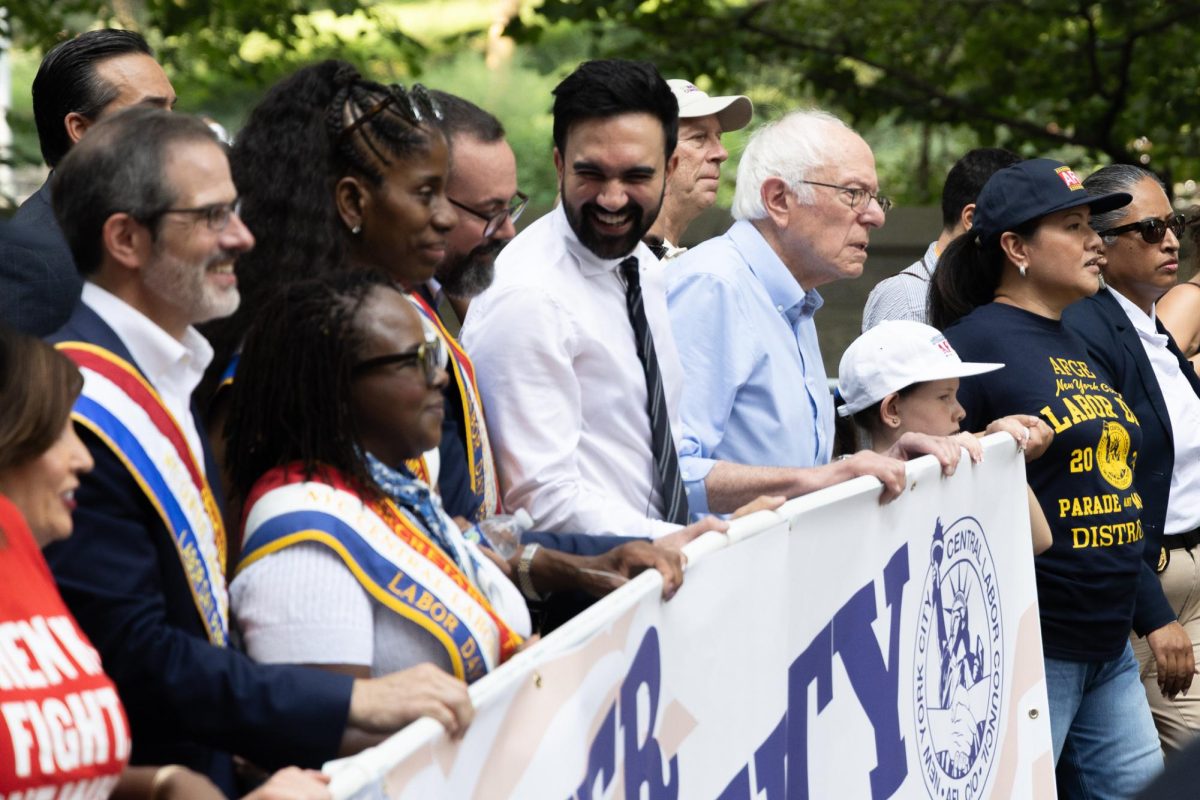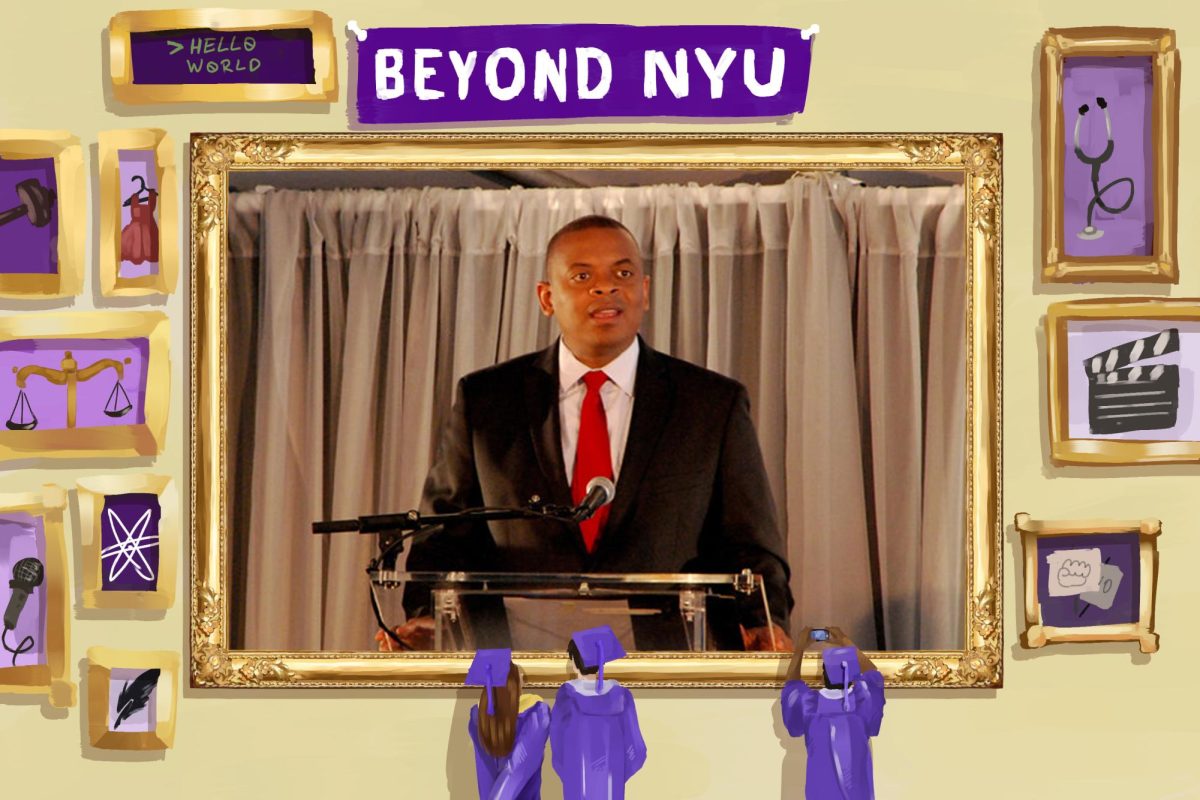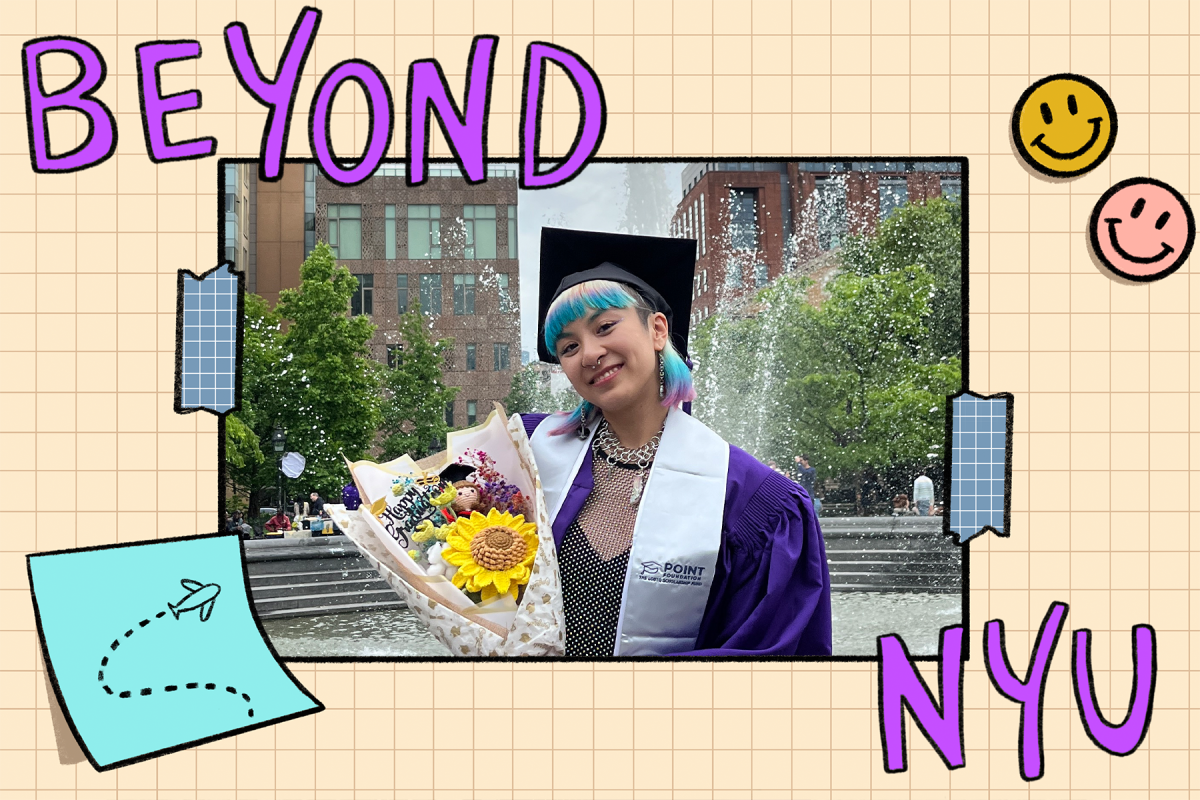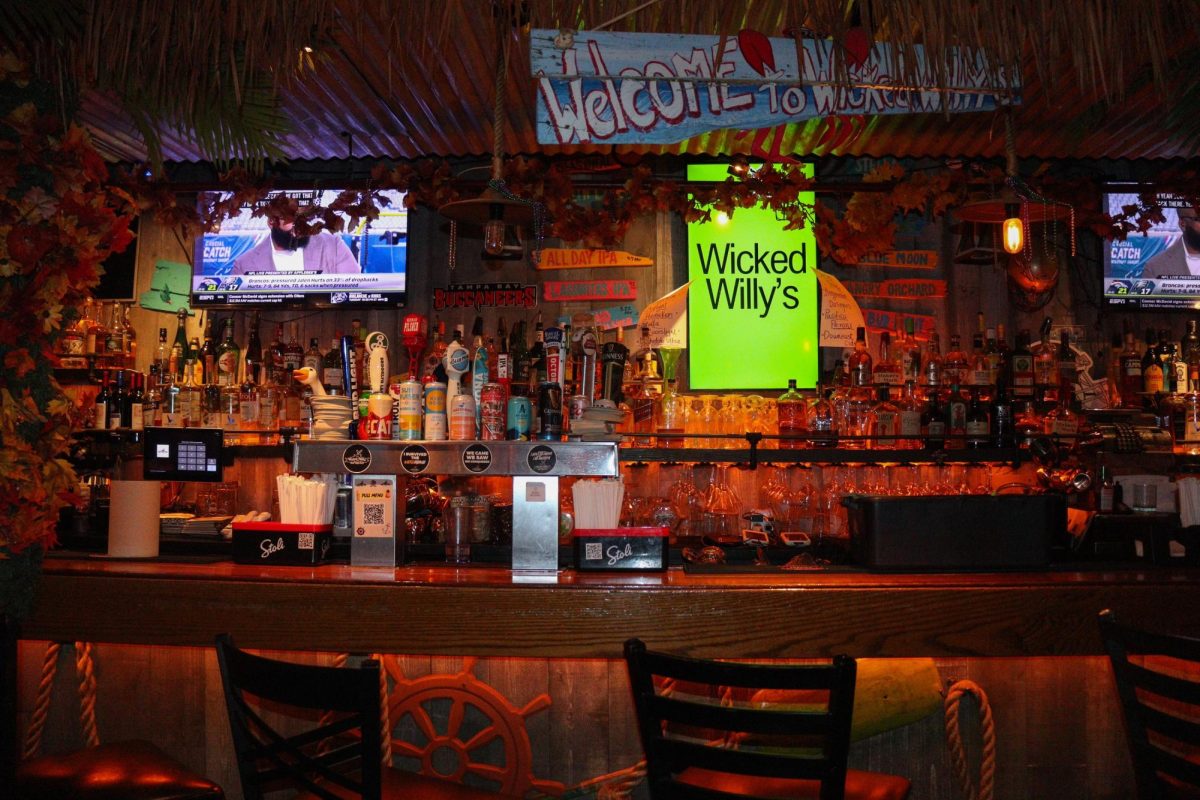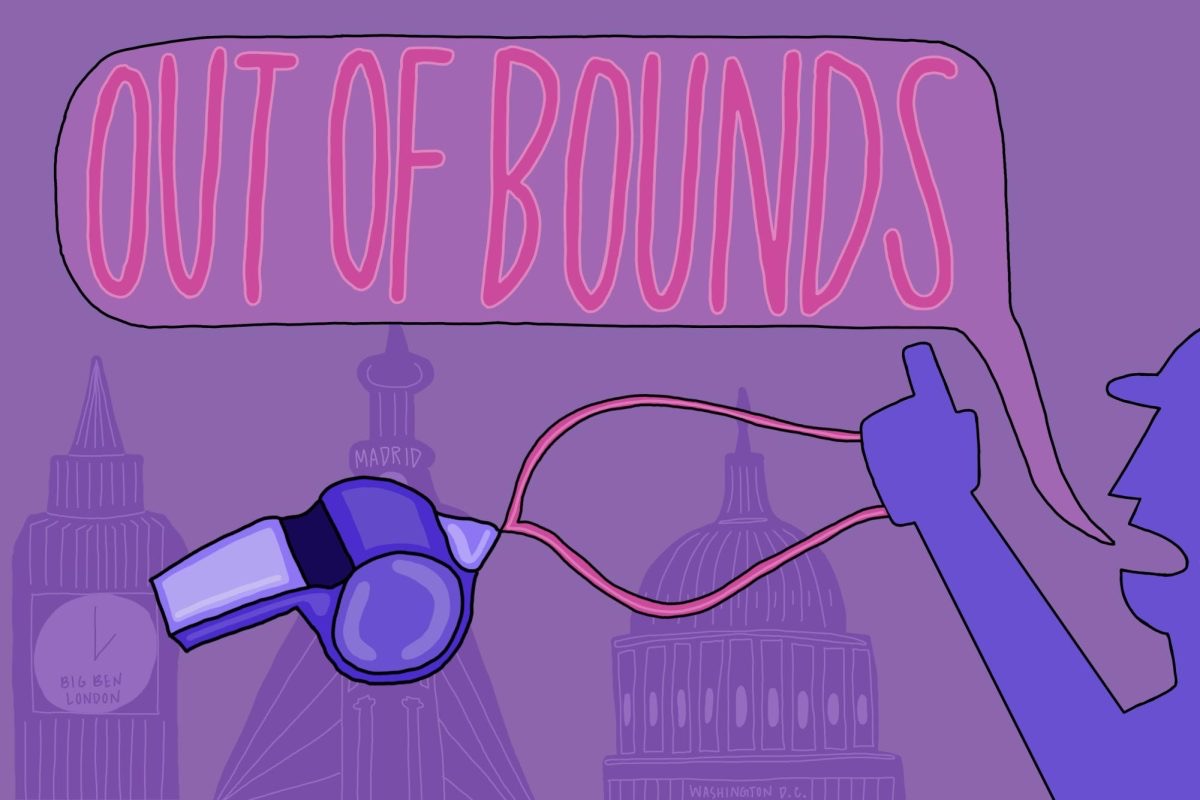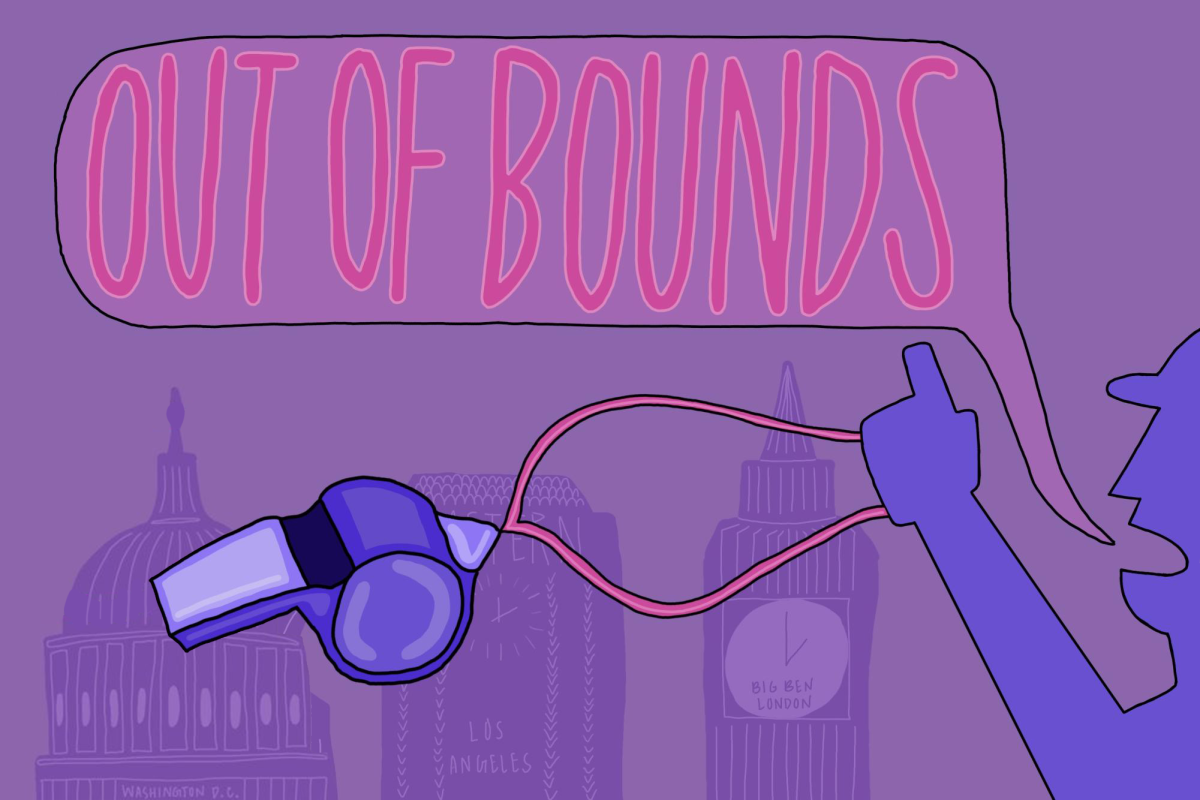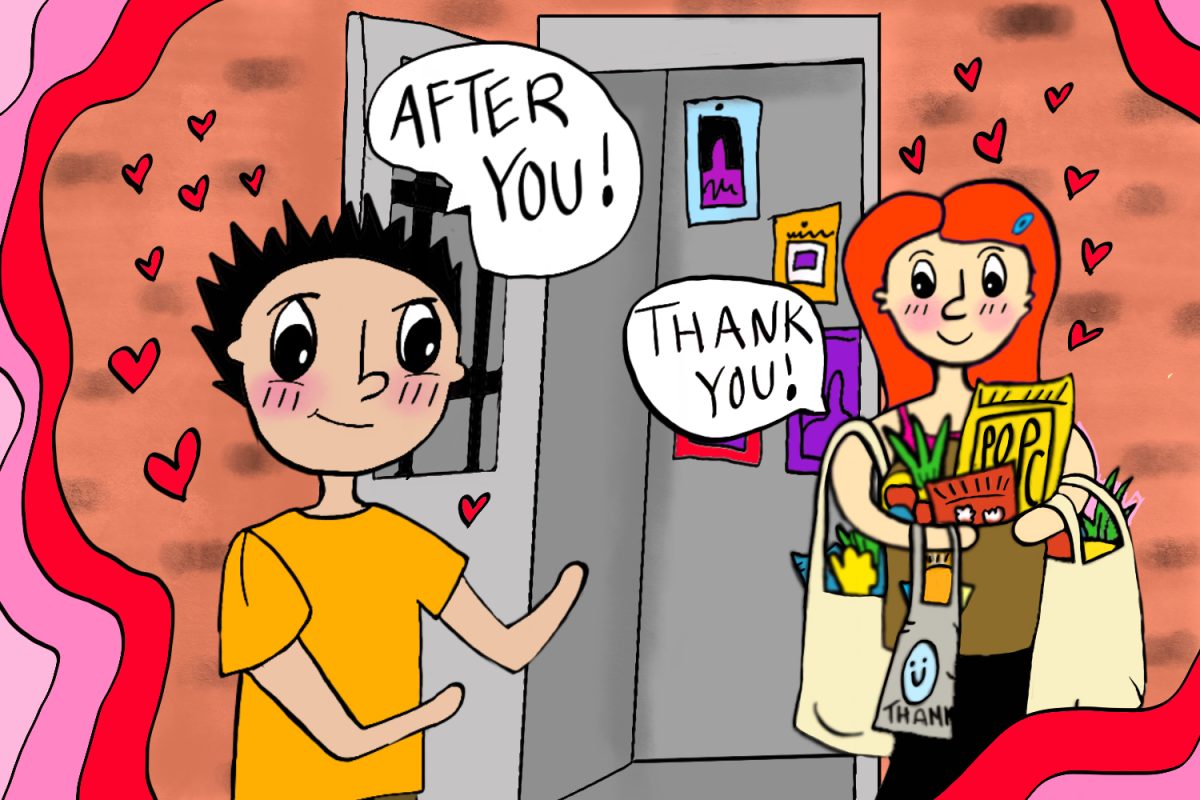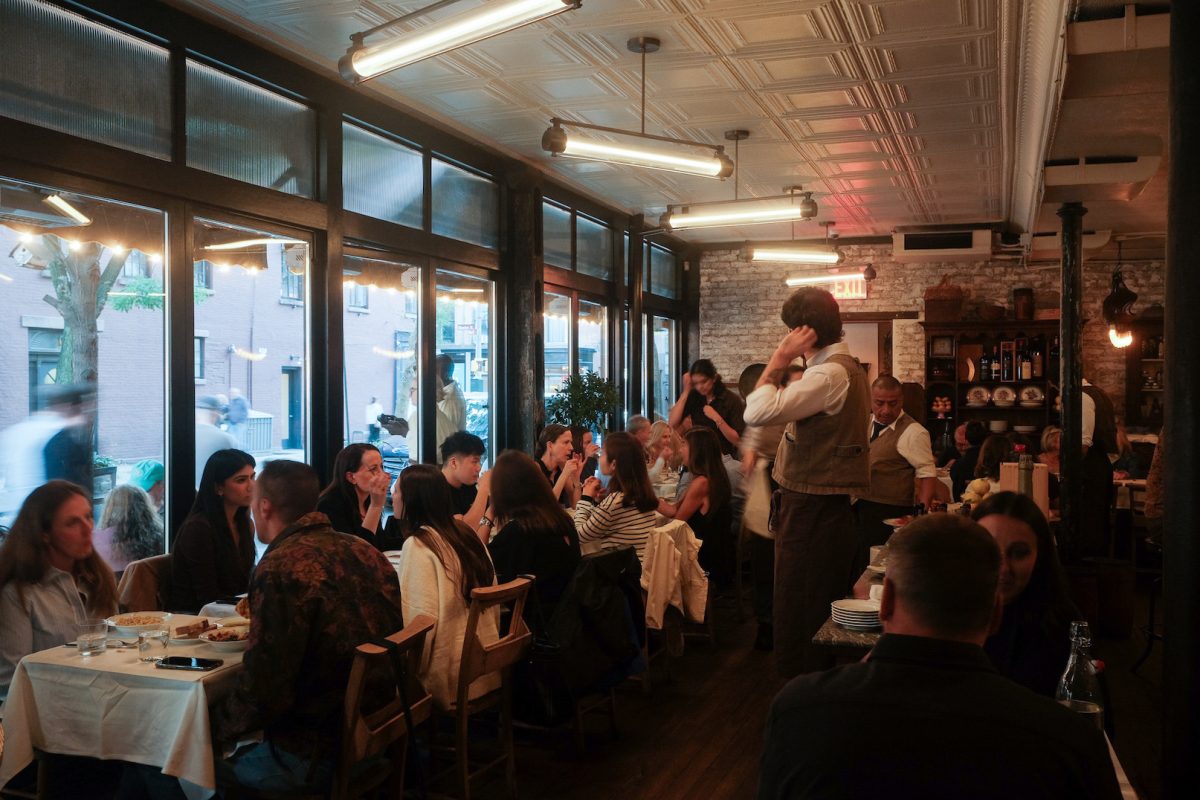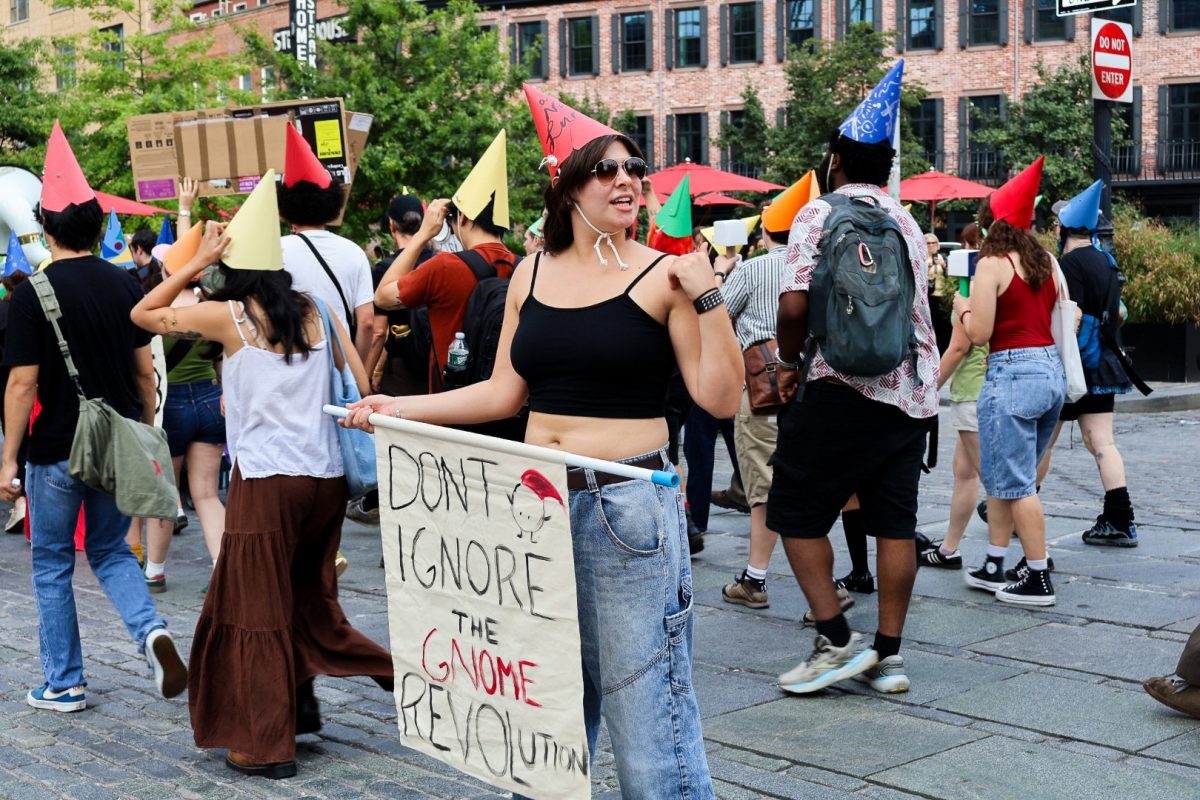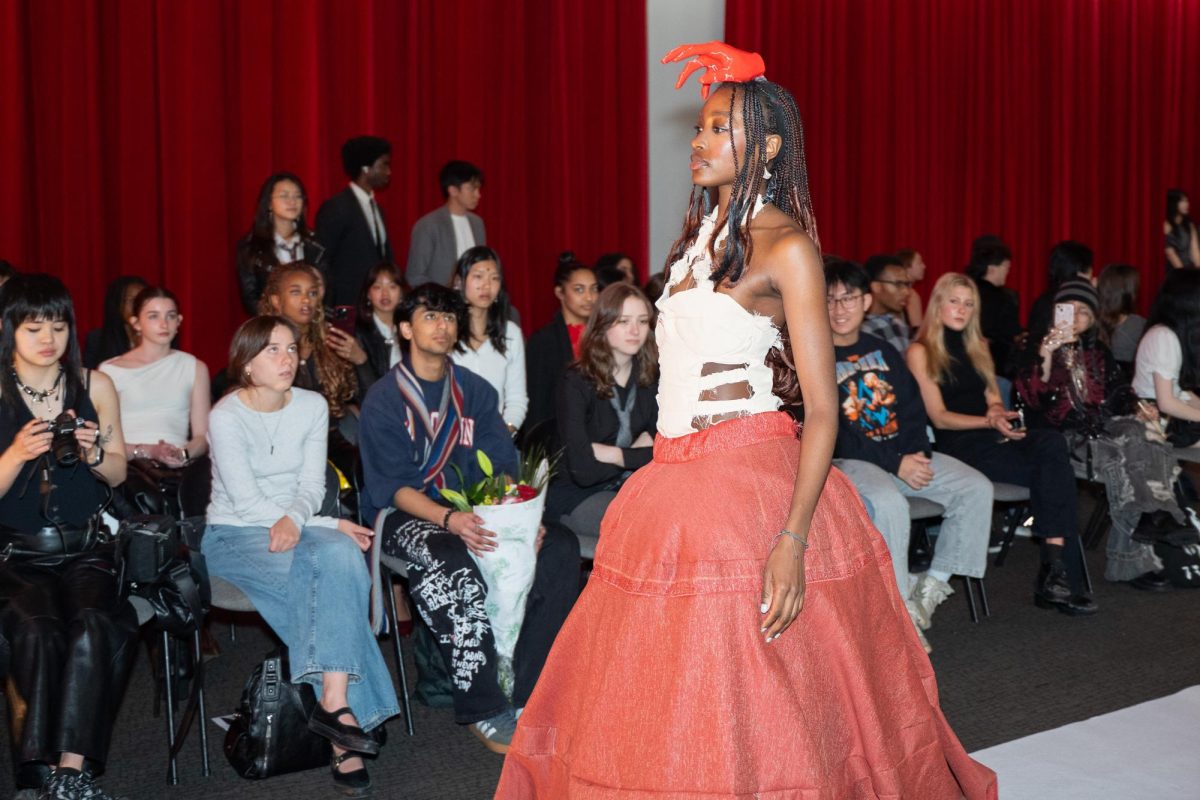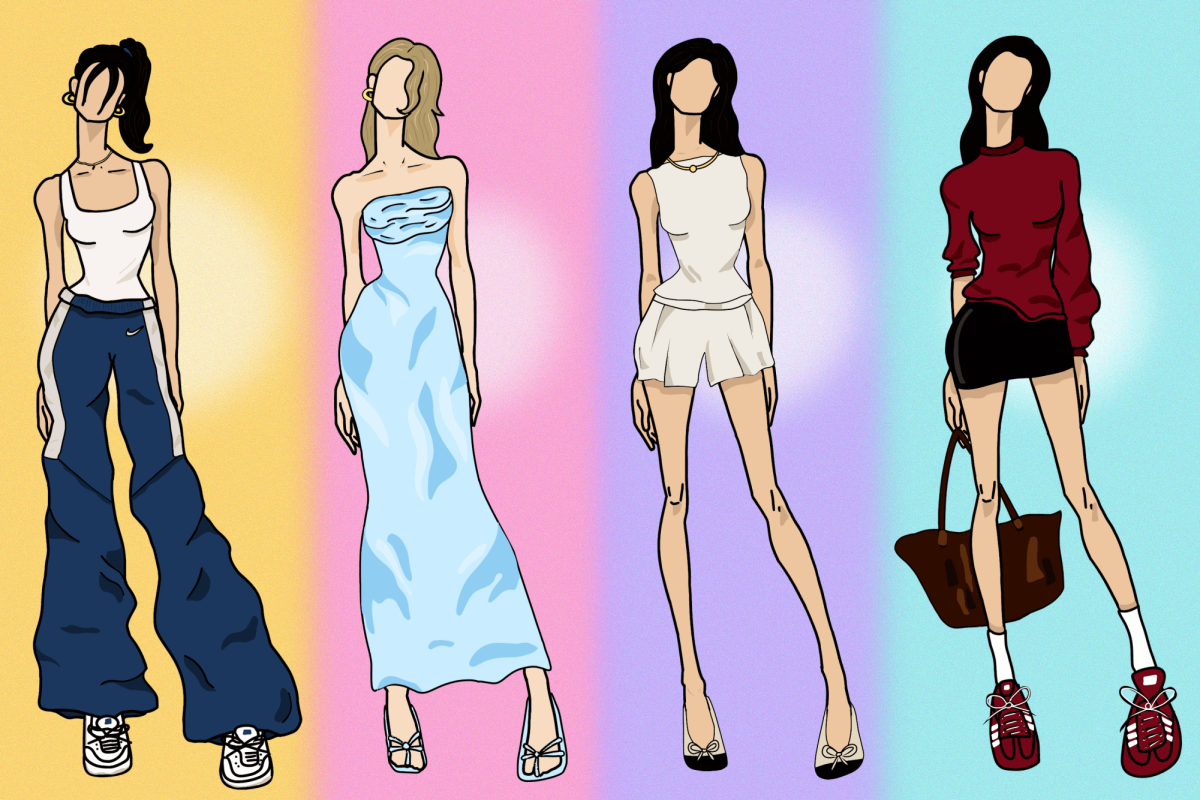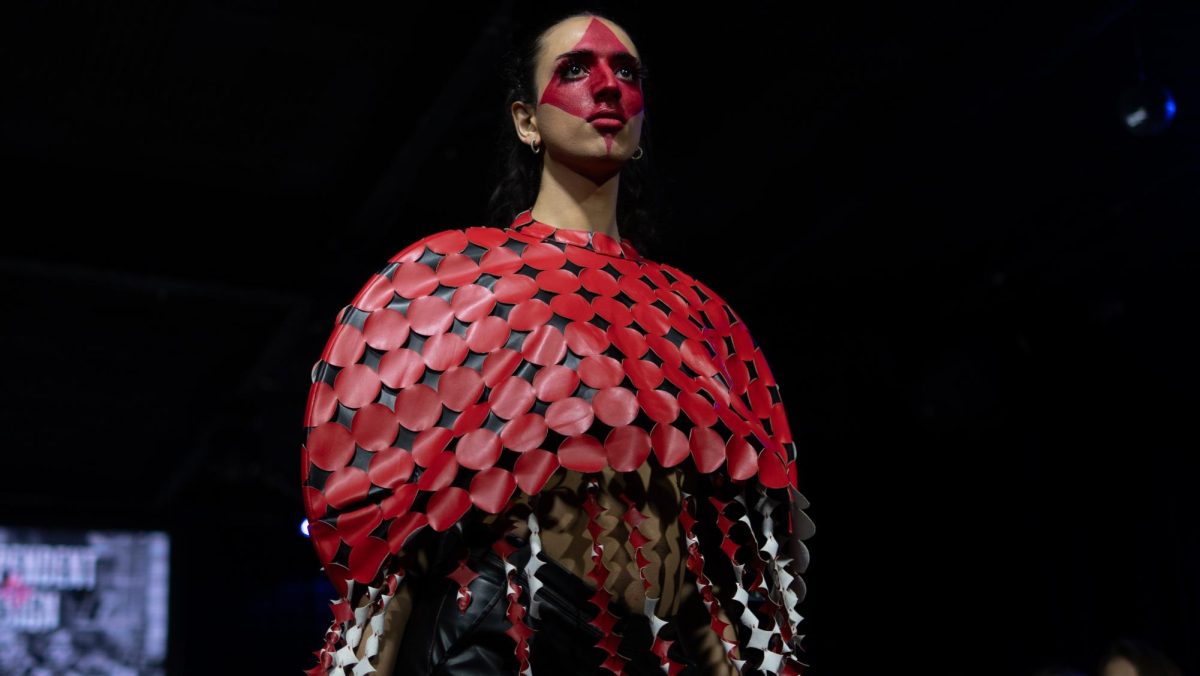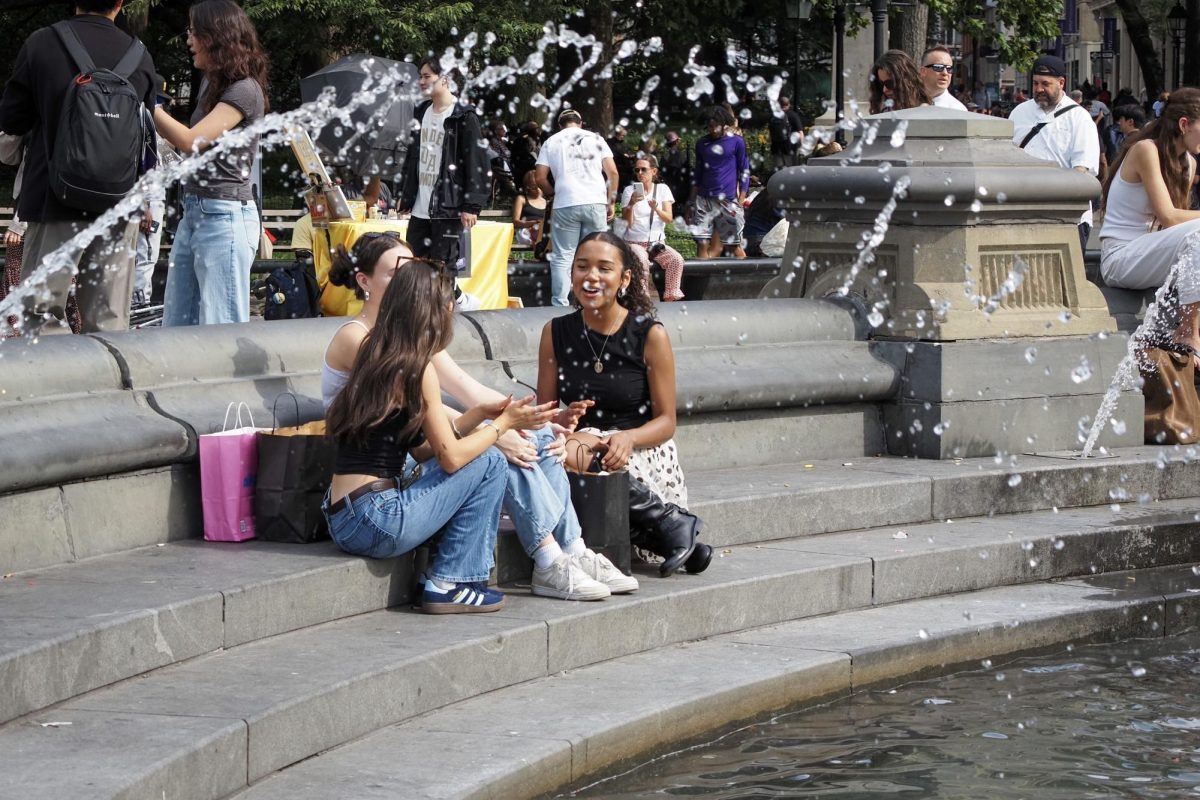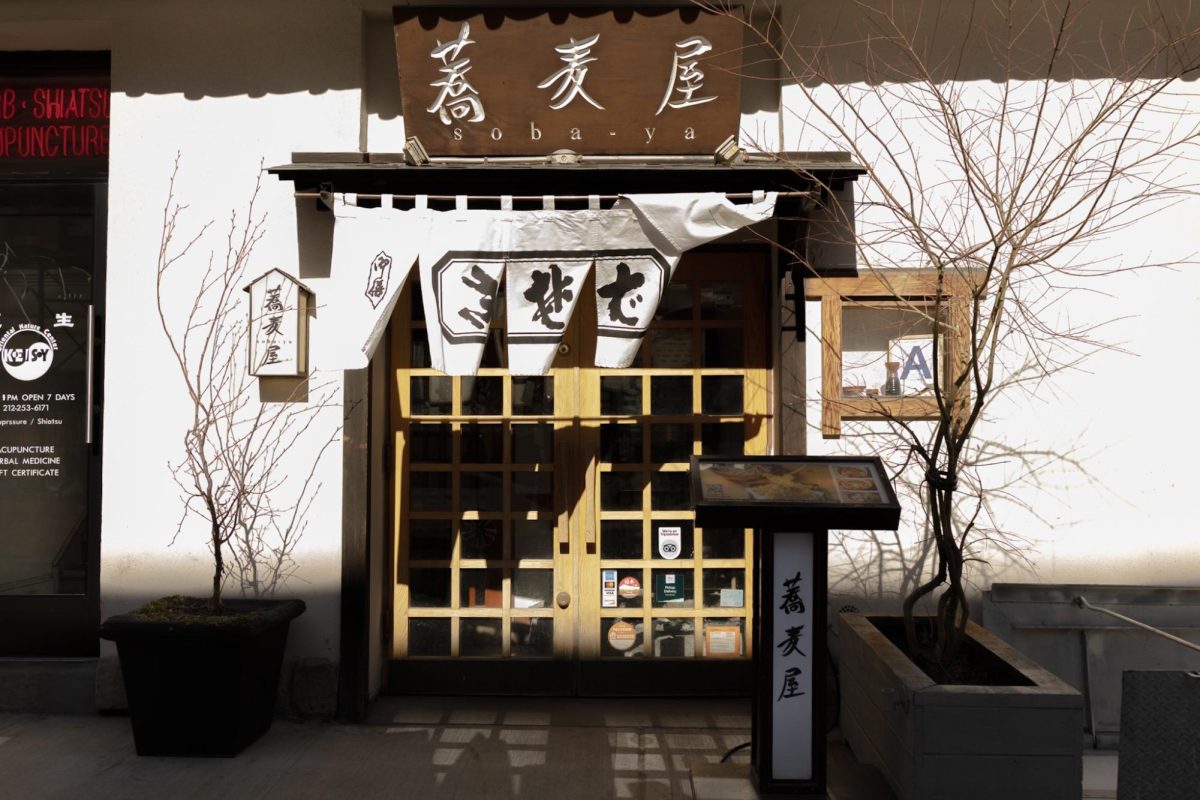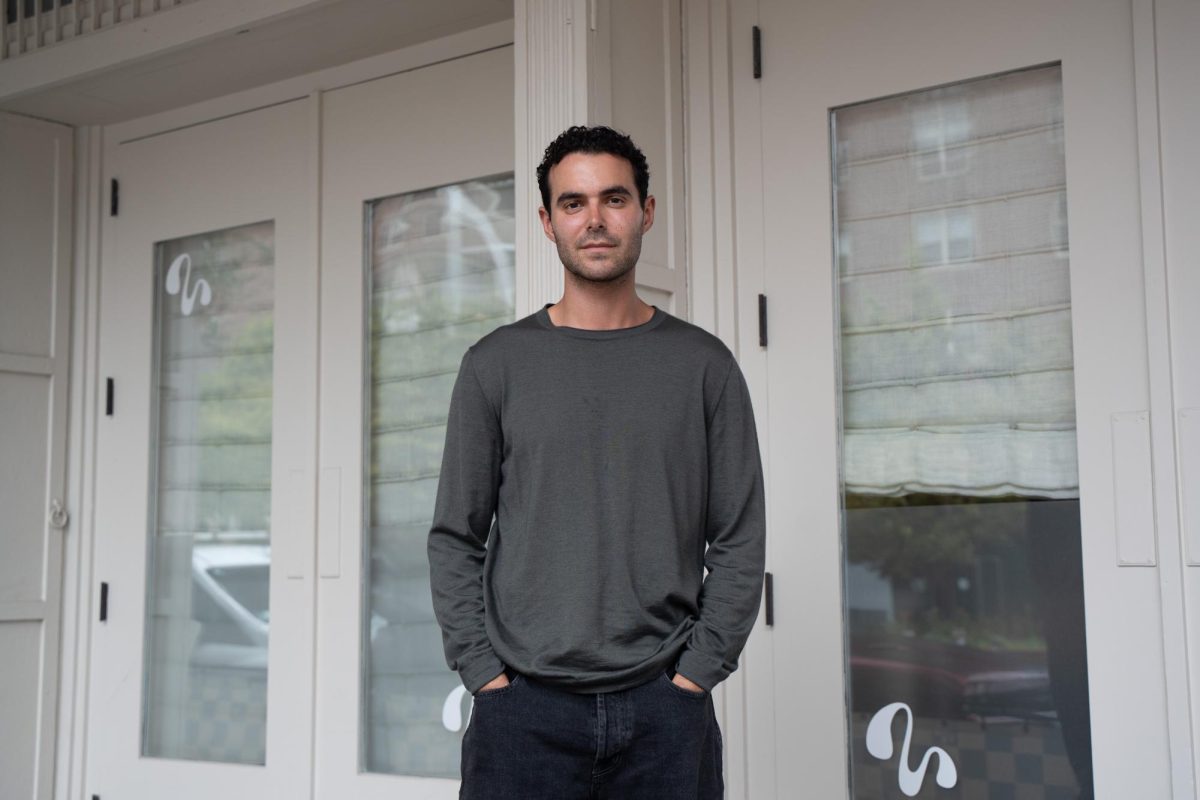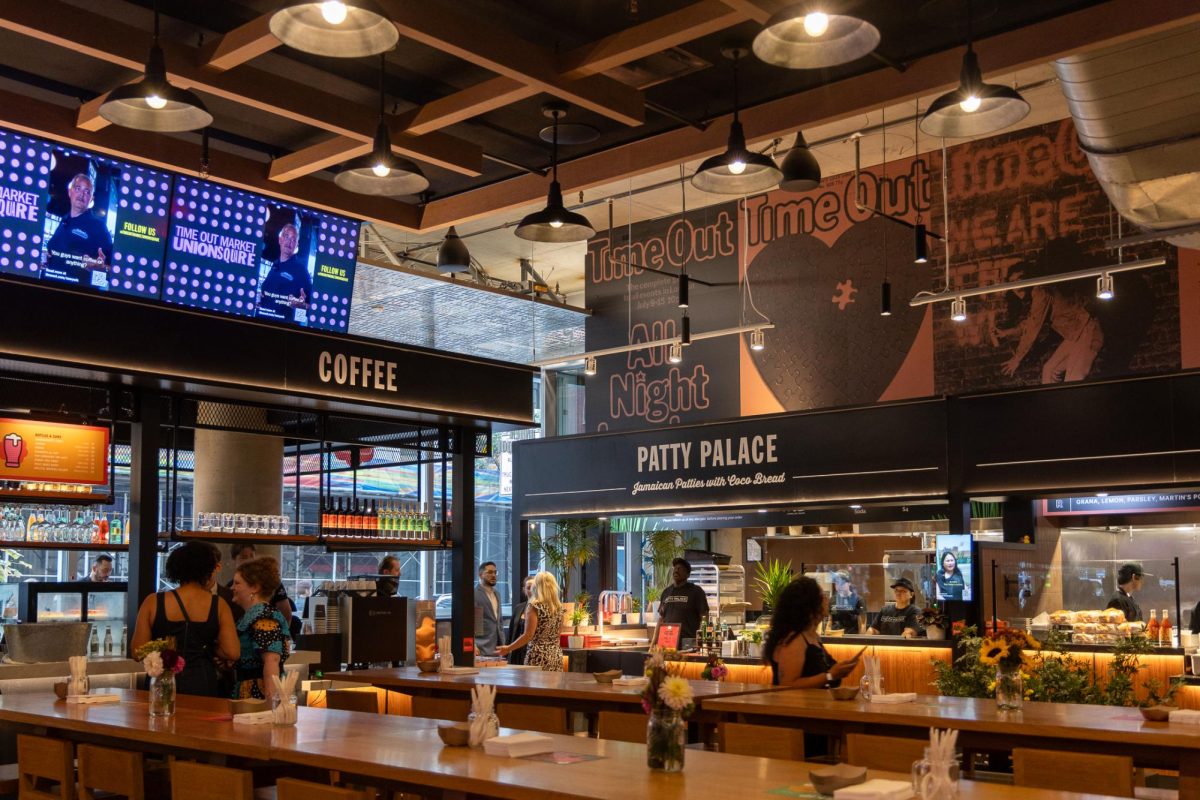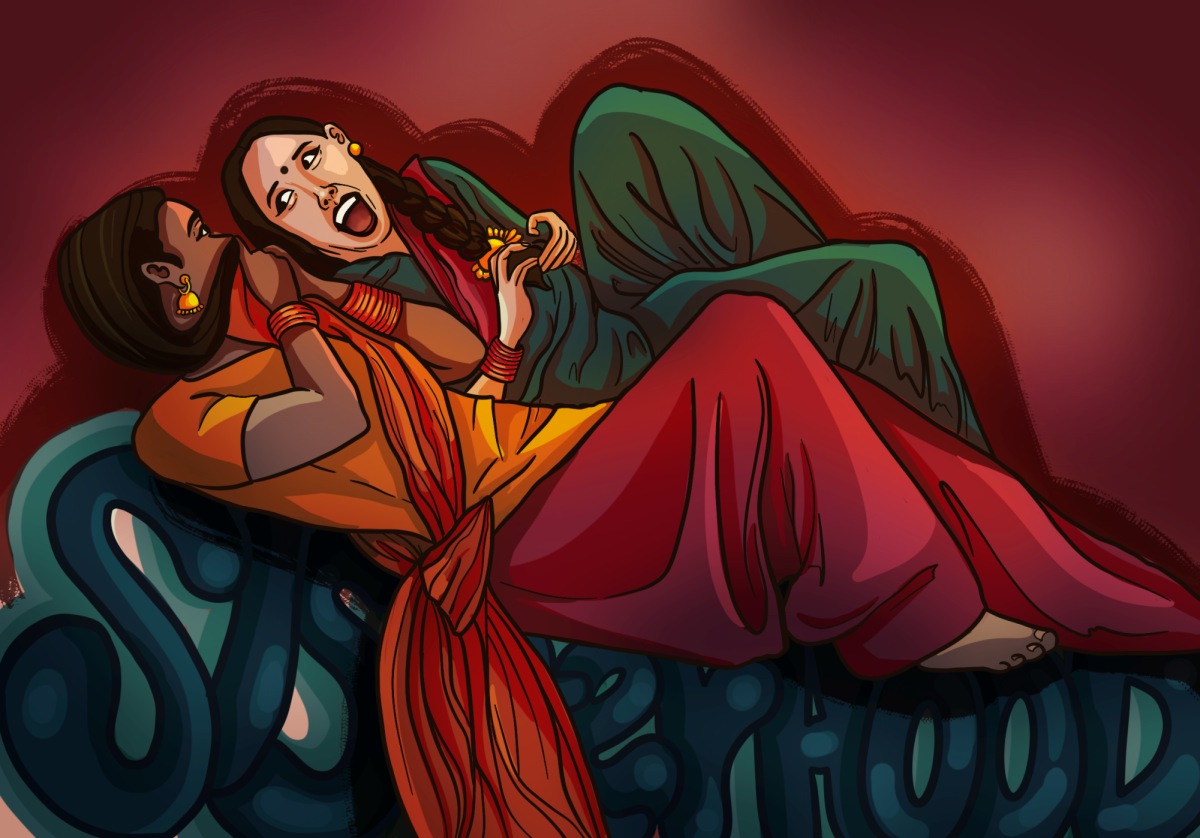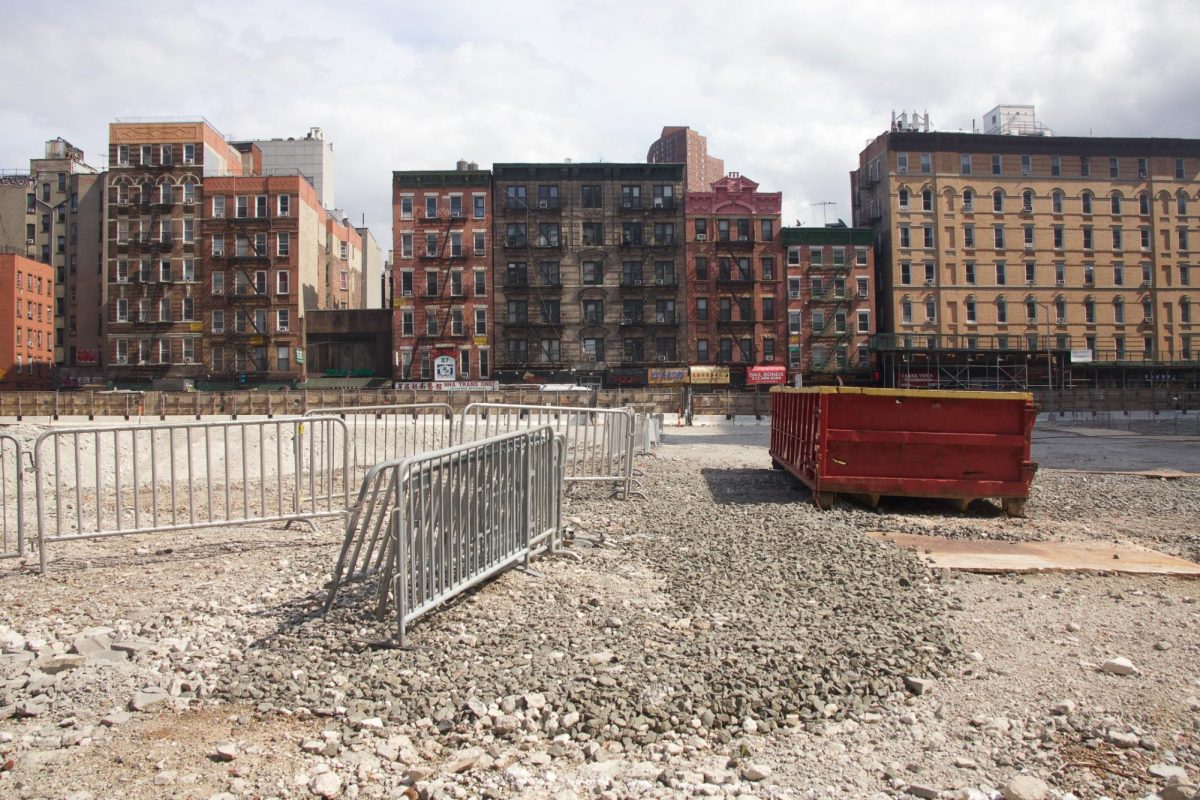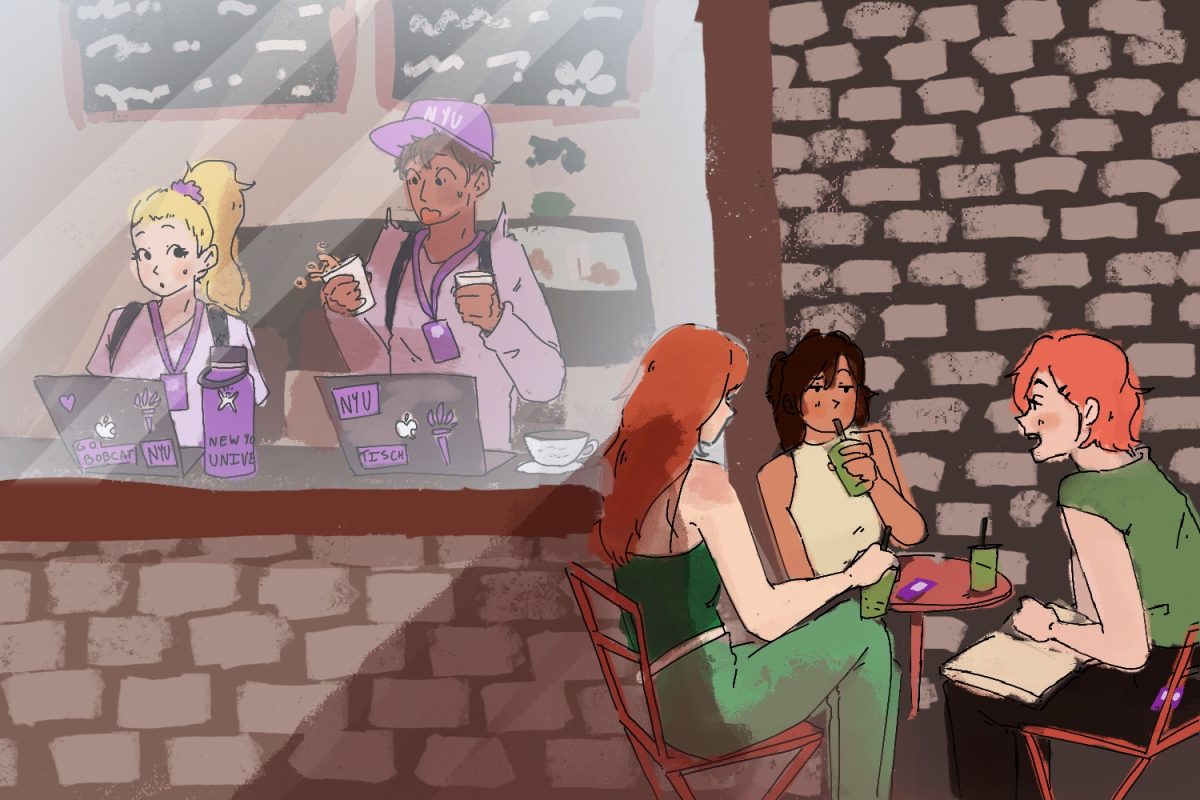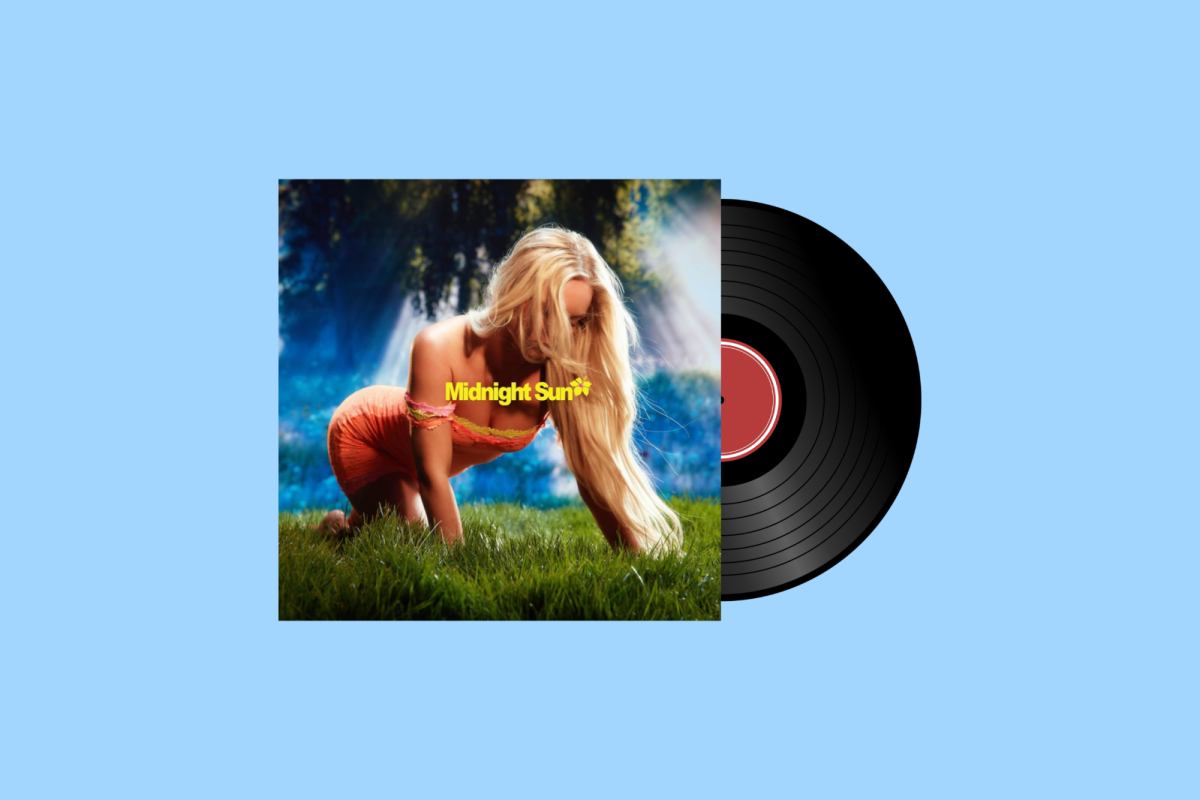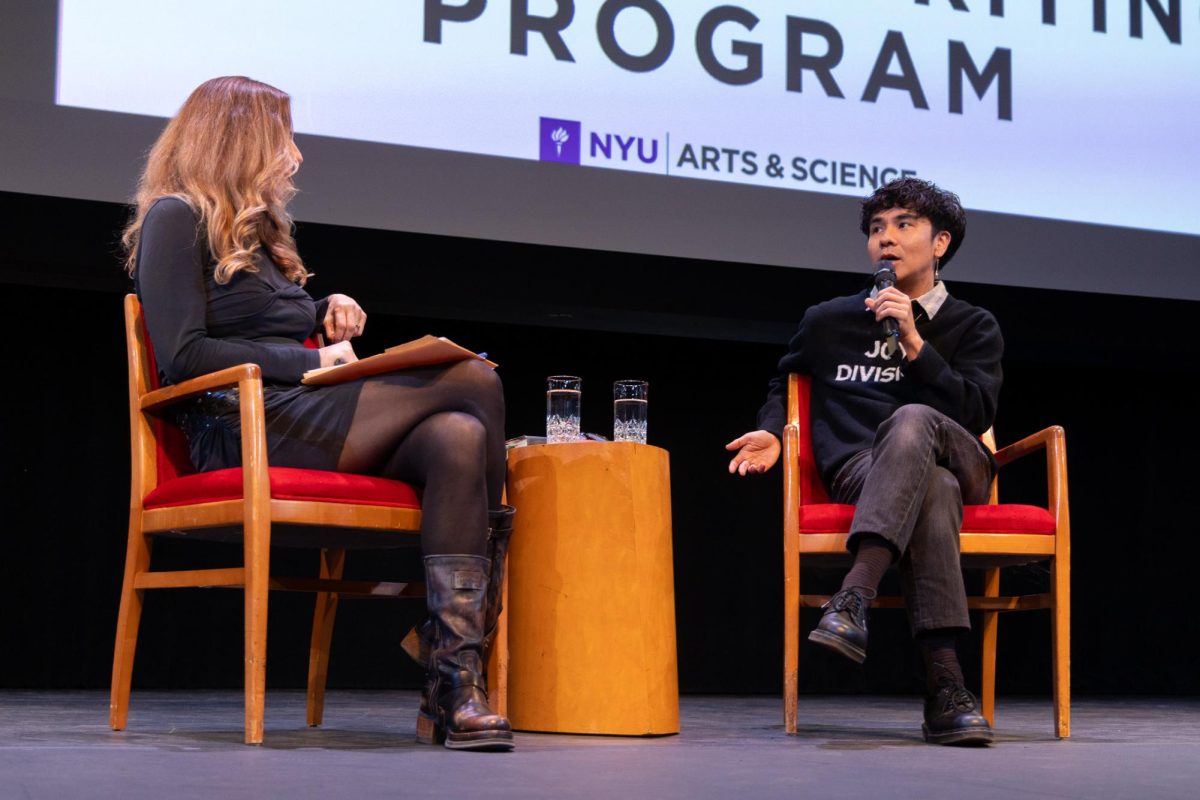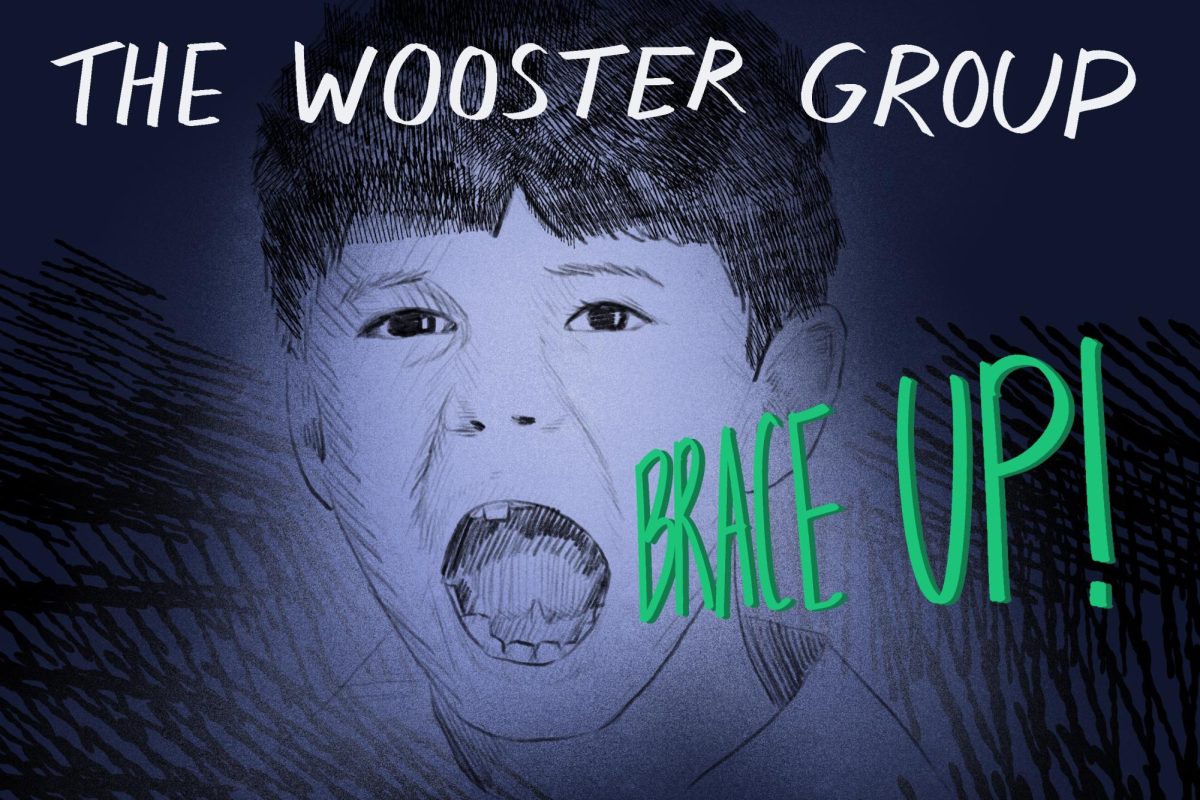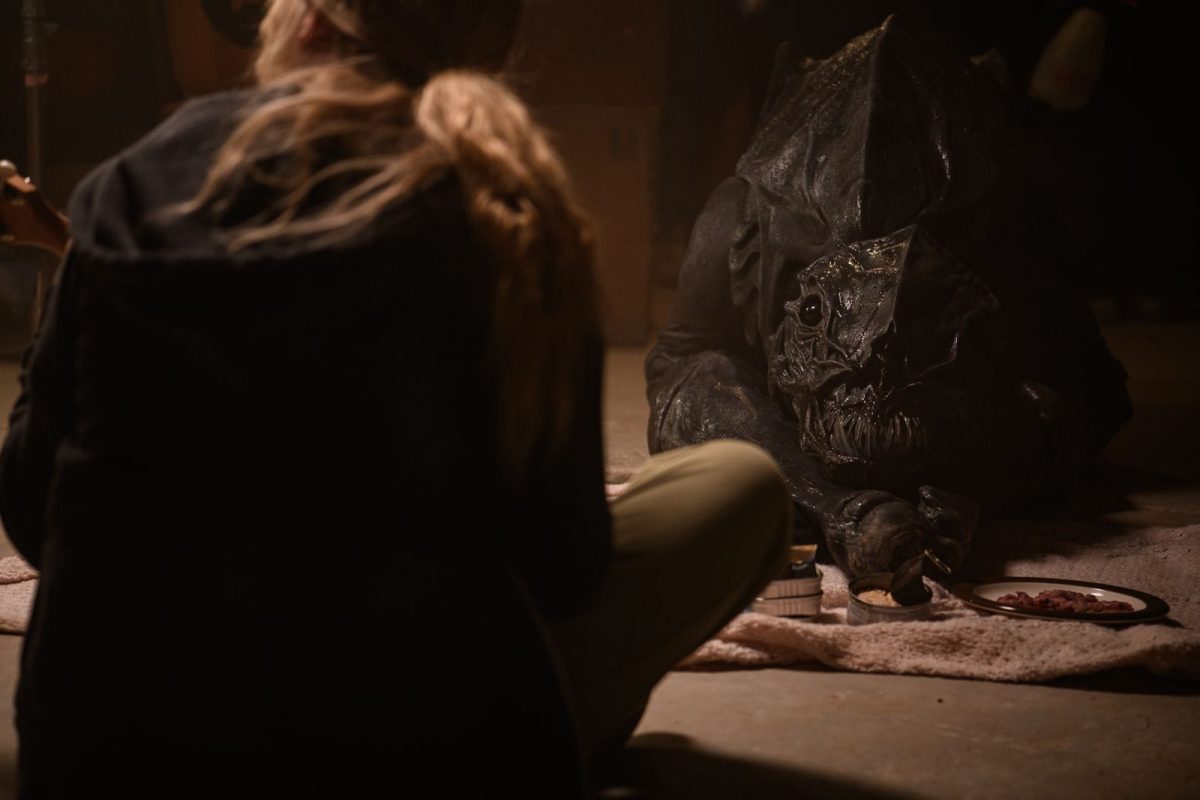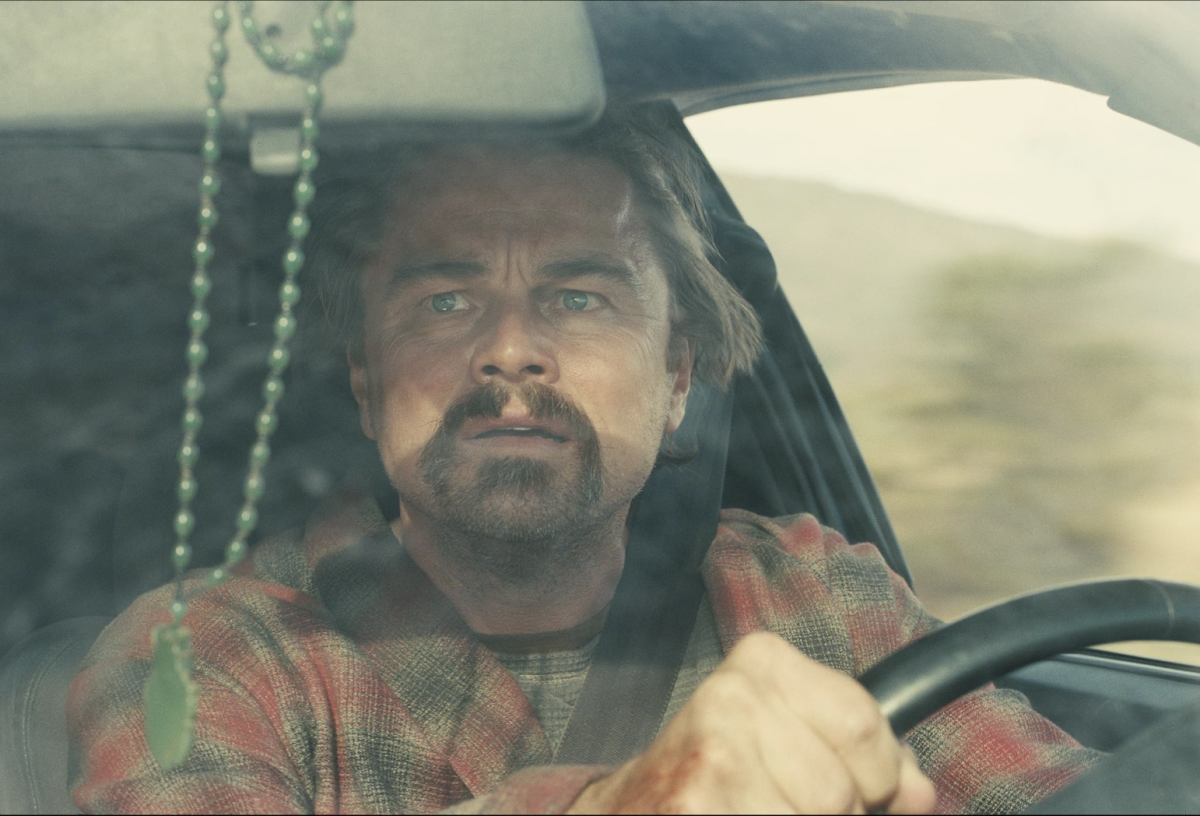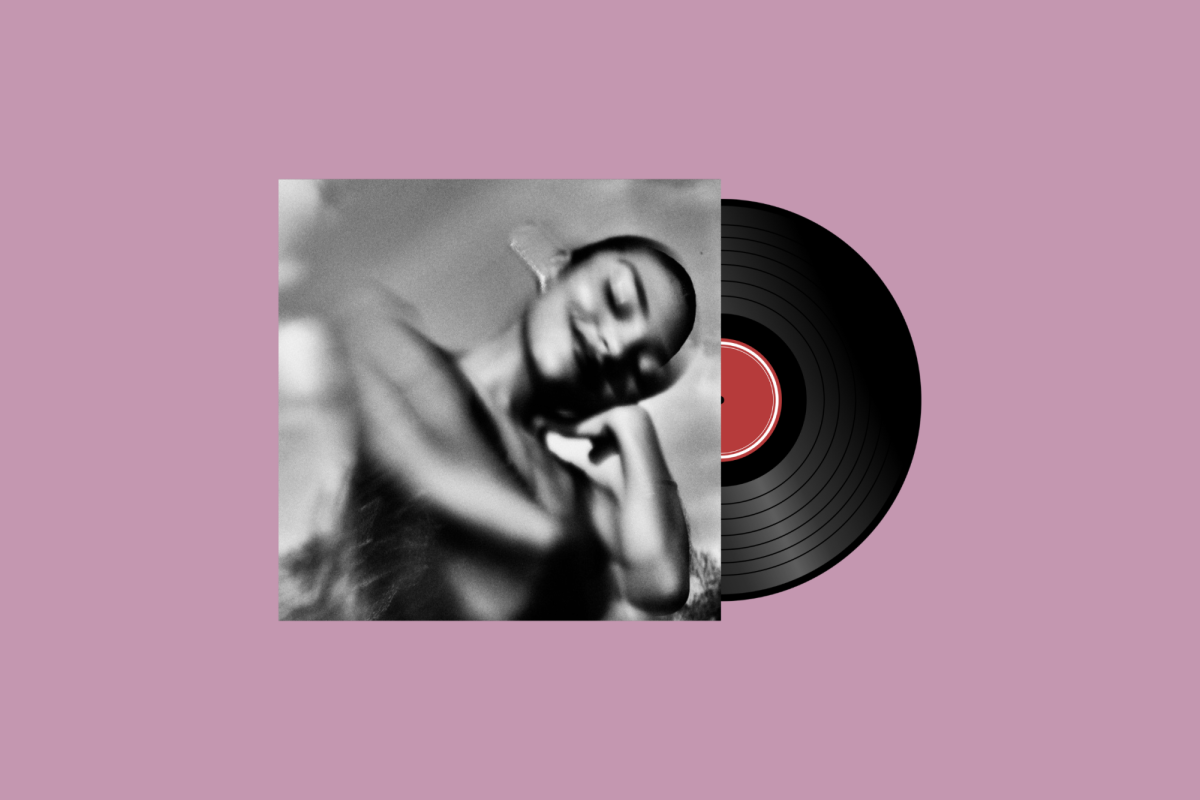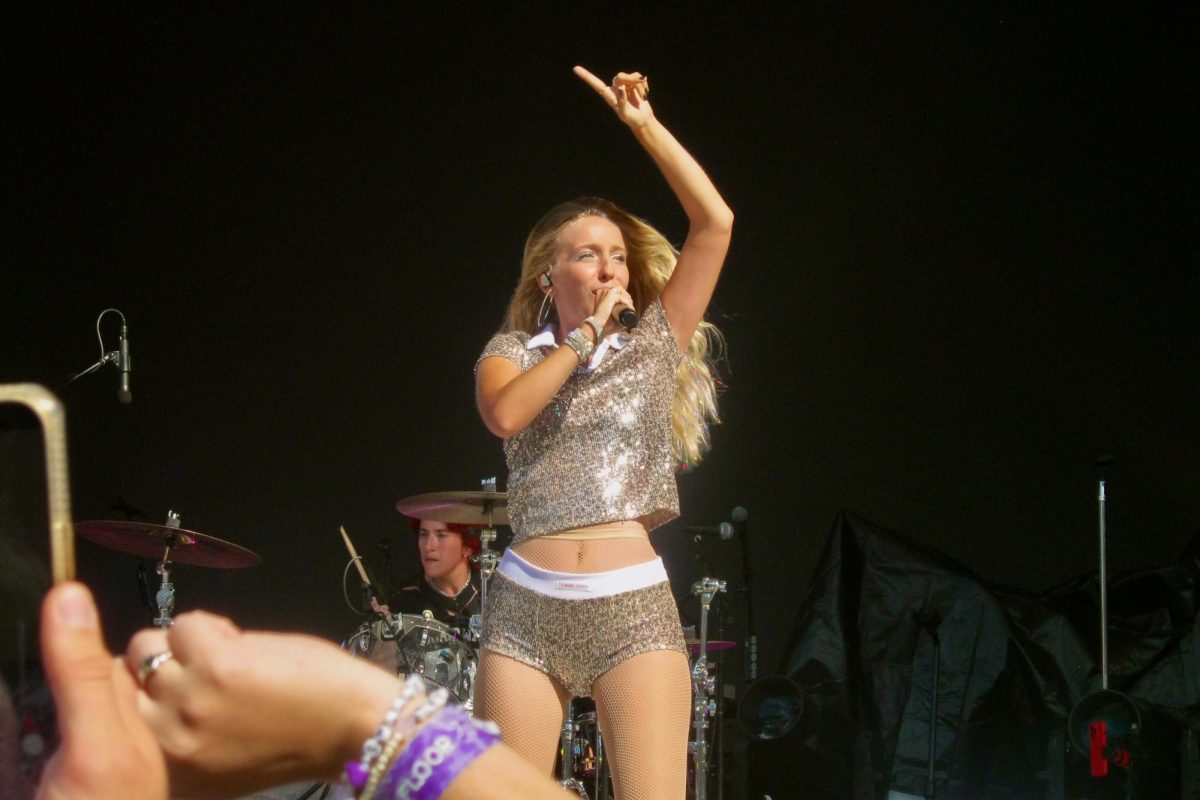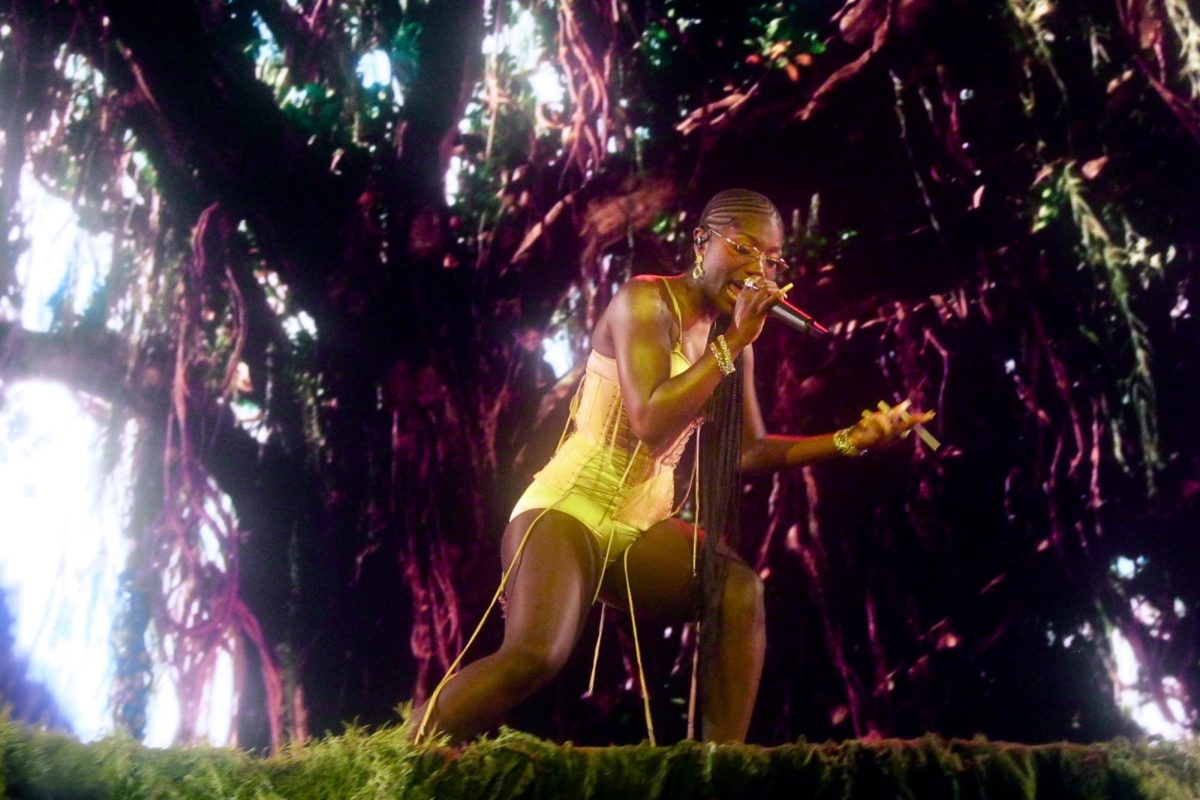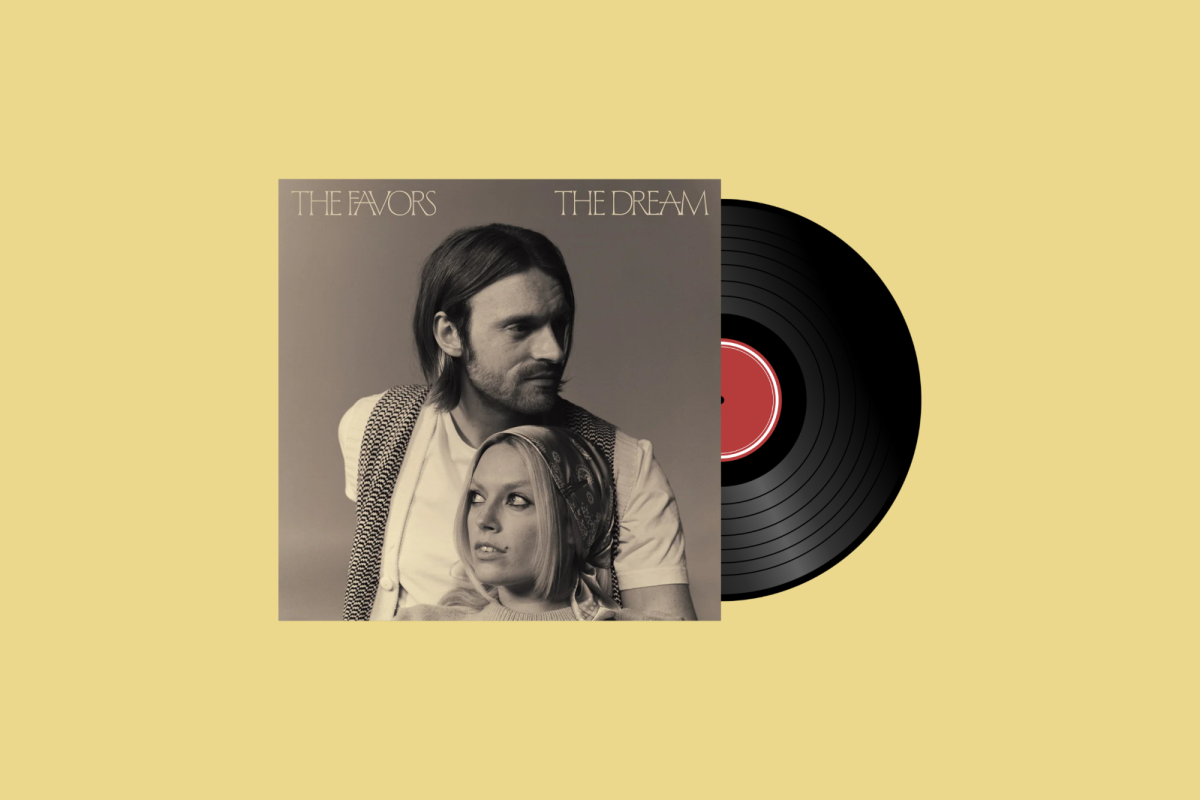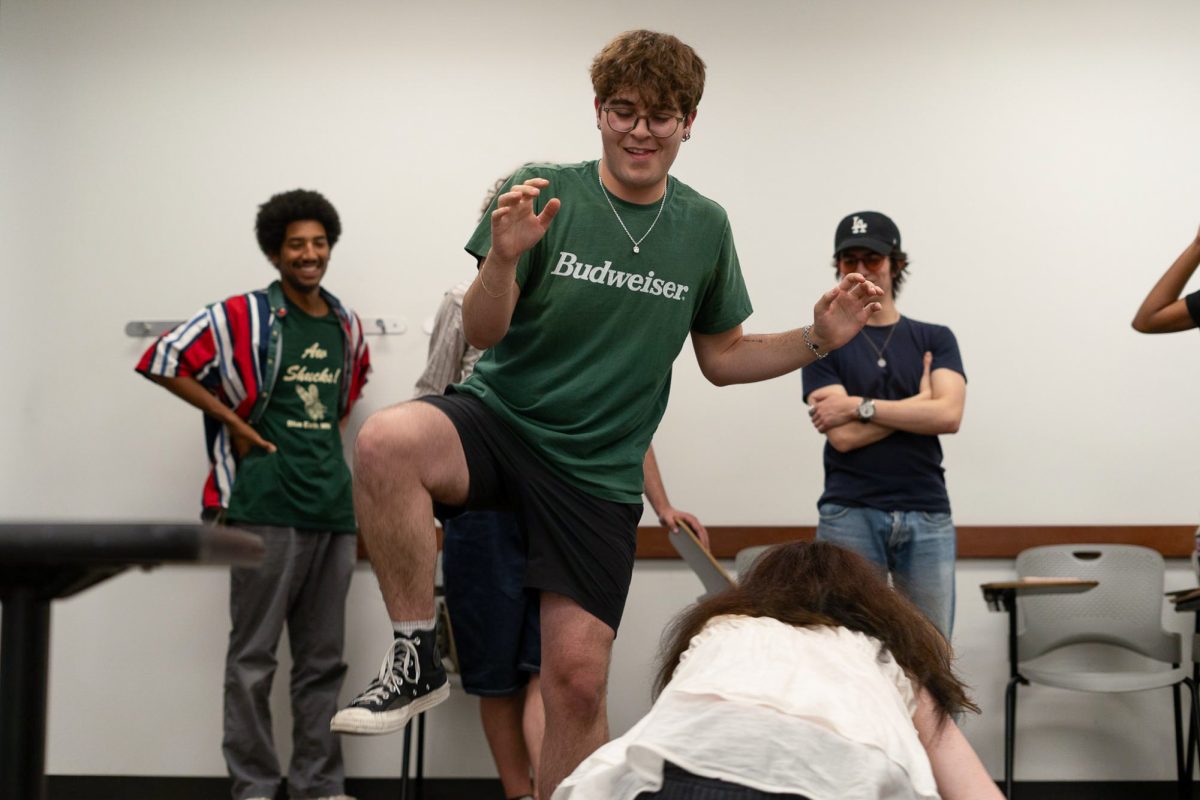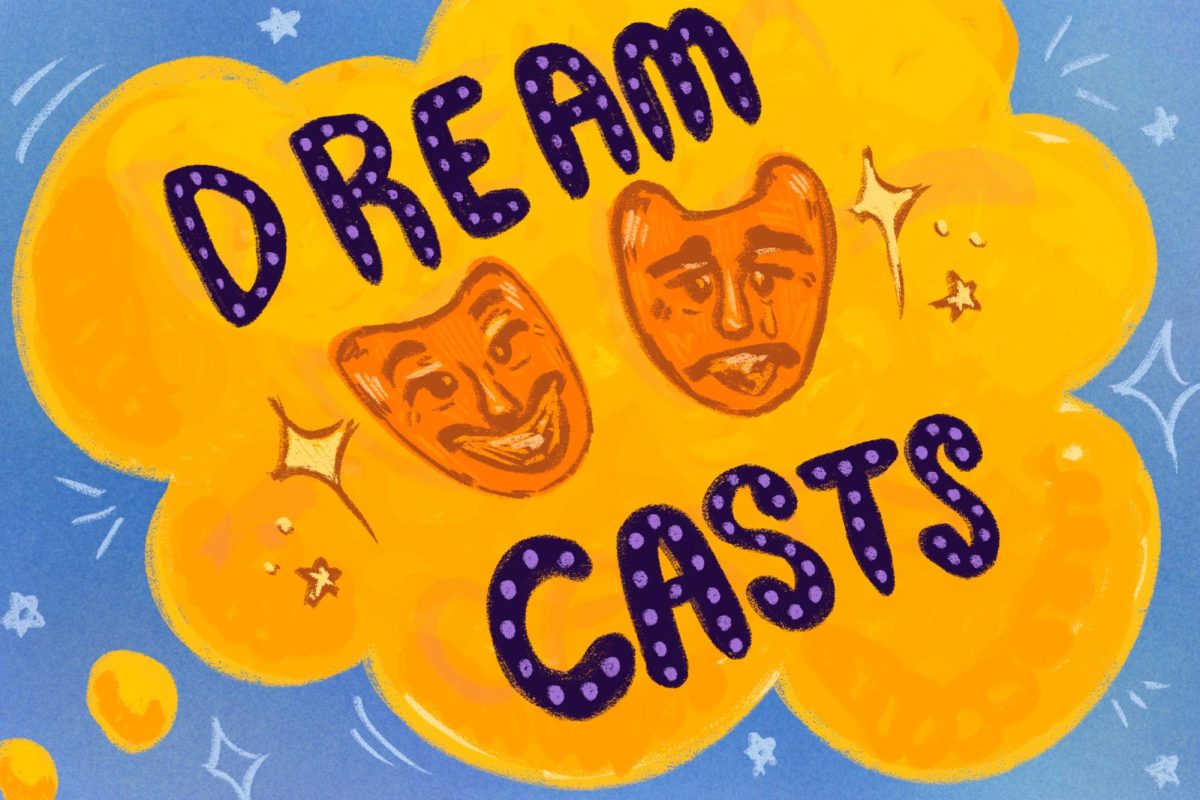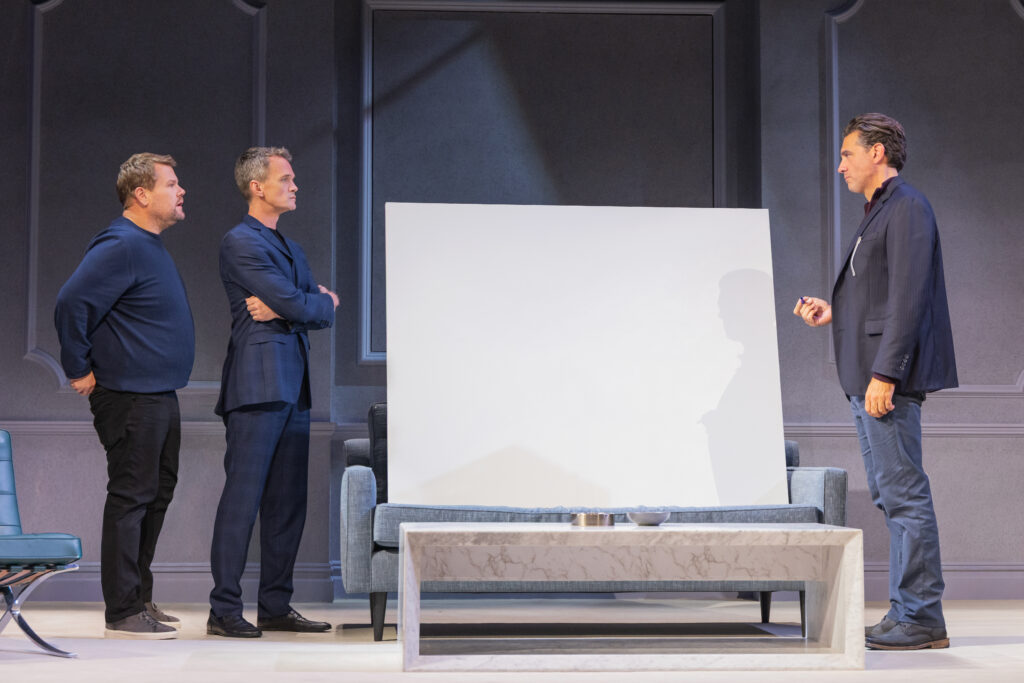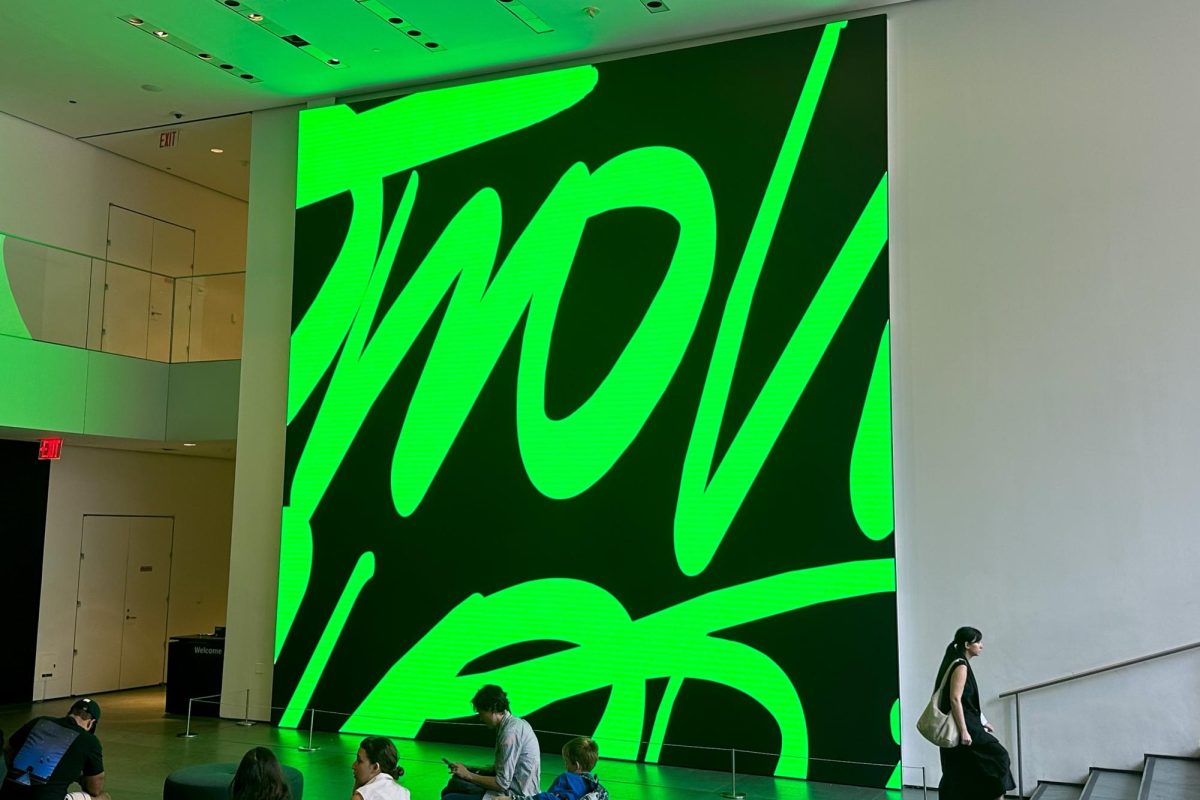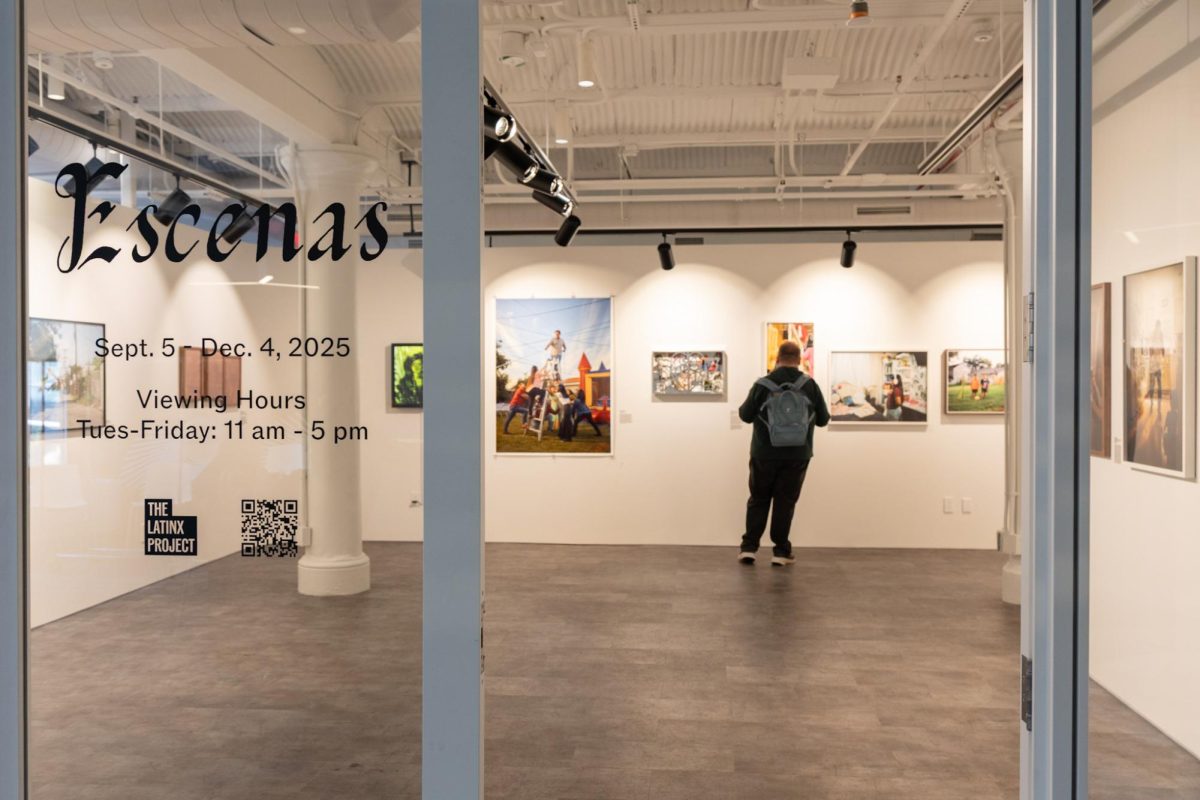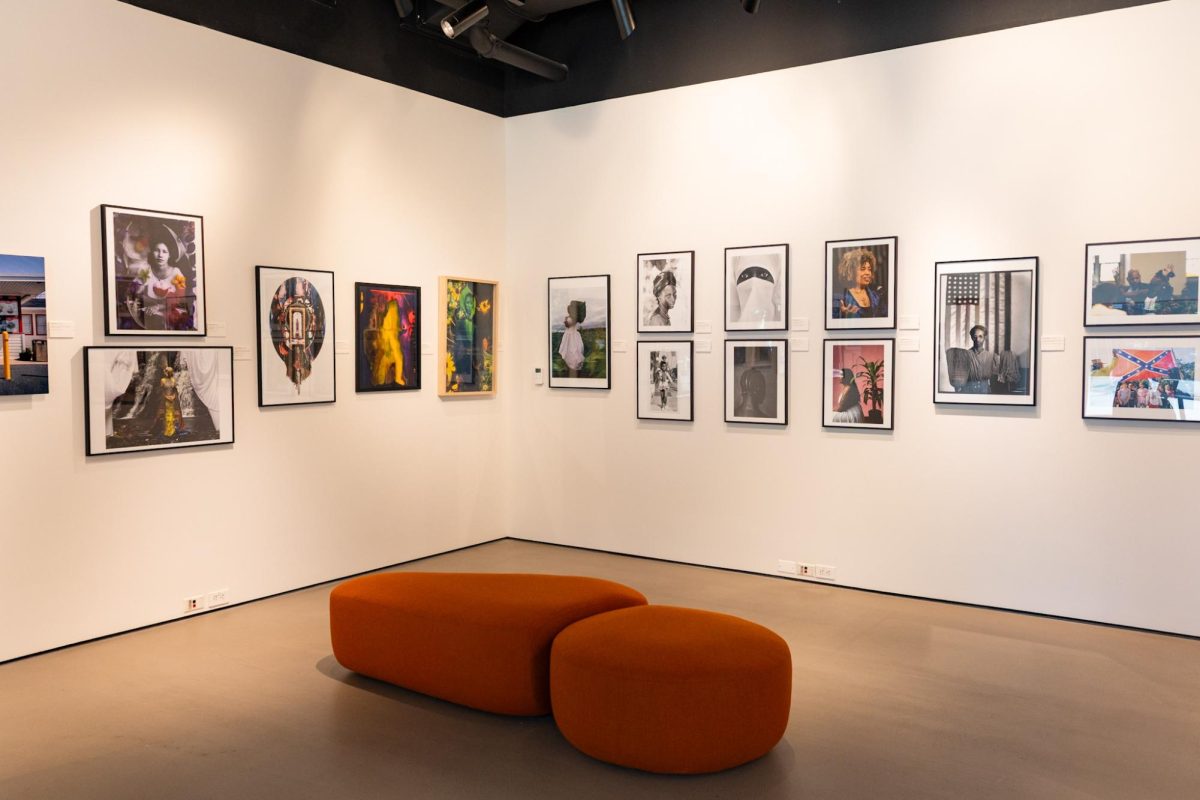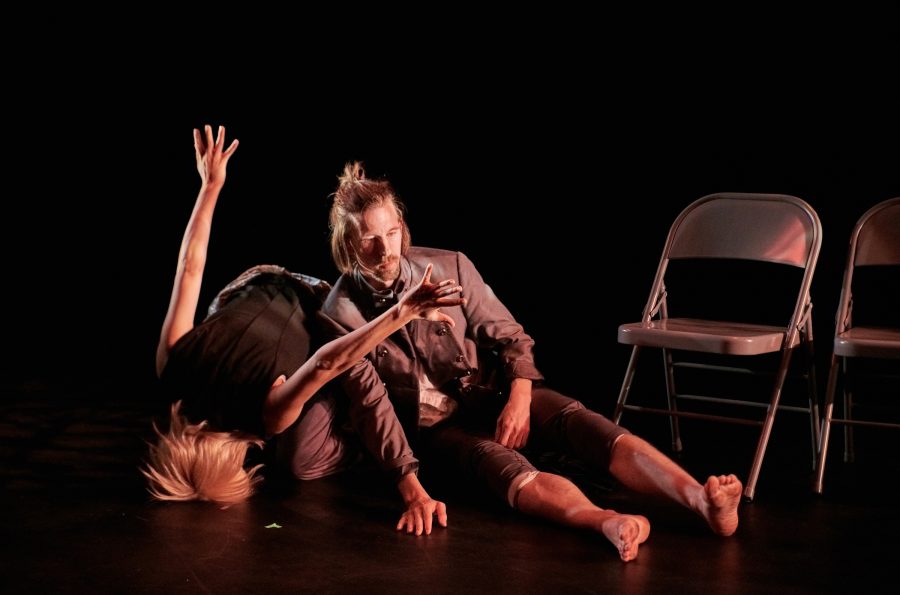In her world premiere of “Not then, not yet” at the Flea Theater in Tribeca, Tiffany Mills of Tiffany Mills Company transports her signature style of contact improvisation and contemporary partnering to the stage.
In Puerto Rican composer Angélica Negrón’s avant-garde electronic score, the world of live performance collided with the eerie, operatic vocals of French vocalist/composer Muriel Louveau and the otherworldly epic of the dancers tirelessly rearranging chairs. The constant transitioning between partnering objects and people alluded to an architectural narrative, one in which the dancers depended on the space to survive, and to what Mills described in a press release as “the liminal space between endings and new beginnings.”
Mills thoughtfully illustrated this “between space” with a series of duets in which power constantly wavered with the fluidity of intimate weight sharing, often resolving only when both dancers tumbled to the floor.
Dancer Kenneth Olguin’s humanoid solo on and off the chair depicted a monstrosity that ached to find a concrete shape amid the surreal: the muscles of his upper torso clenching with his dynamic grasps at the chair and the black marley beneath it. The other dancers who witnessed this outburst from deep in the upstage right corner later re-entered, synchronizing with Olguin’s mute scream, their jaws stretched wide before beginning a series of manipulations with the chairs in duos.
Dancer Nikolas Owens’ solo towards the end of the work revealed Mills’ aesthetic tendency to incorporate witnessing as an unexpected source of narrative in an abstract structure.
While attending classes with Owens at the 2018 Tisch Dance Summer Residency, Owens’ enthusiasm for teaching resurfaced in this solo’s vigorous burst of energy, his limbs collapsing then up-righting themselves in Mills’ seamless, whirling thread of movement material.
In this section, dancer Jordan Morley attempted to enter, then retreated from the space charged by Owens’ soaring arabesque turns and swift arms. Instead, Morley stacked the chairs into a chaotic tower downstage left and lowered his body onto it like a loose puppet.
Dancer Mei Yamanaka’s brilliant executions, suspending her bounds from one chair to the other with single-foot landings, demonstrated a comfortability with the chairs as duet partners, as true with the other five dancers.
It was not so much a jungle gym to be explored, but a landscape with which to co-exist, Louveau’s live vocal trills and high-register cries hinting at some barren, subconscious topography. For Mills, this space held potential for themes as definitive as life or death, past or future, but her dancers’ wild, phantasmagorical energy inside of each movement phrase suggested that no definitive theme could be reached. Again, Mills proves that a dance with this “between space” can achieve a higher psychological resonance with its viewers than say, a dance with the concrete world.
Tiffany Mills and Company will perform a section of this work again at the Flea Theater as part of the 2020 Association of Performing Arts Professionals Conference on Jan. 10-11 at 7 p.m., and Jan. 12 at noon.
Email Maxine Flasher-Duzgunes at [email protected].

